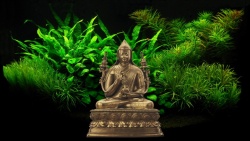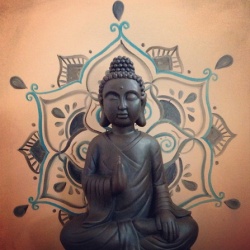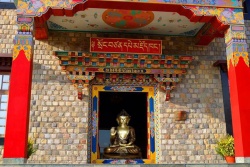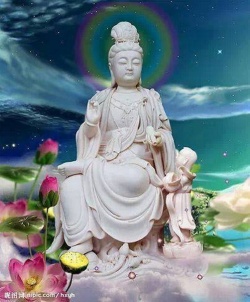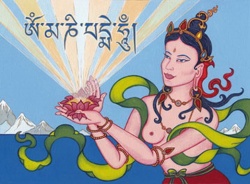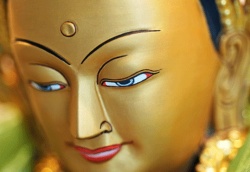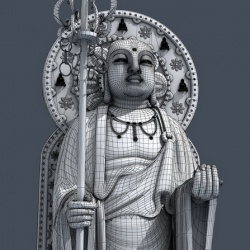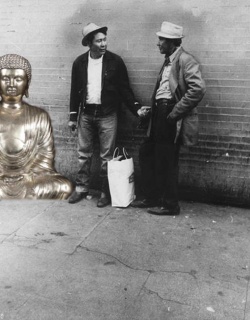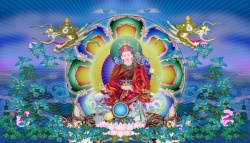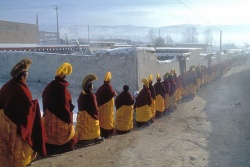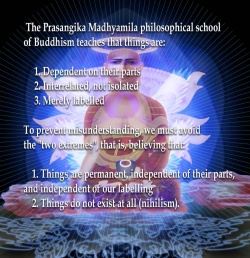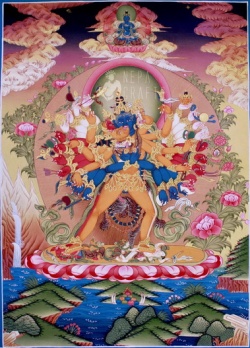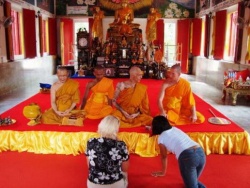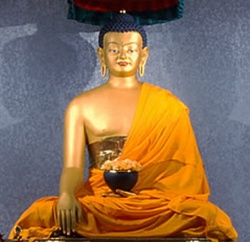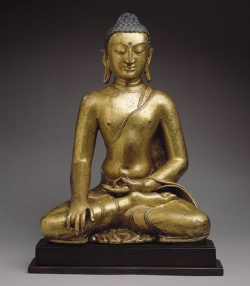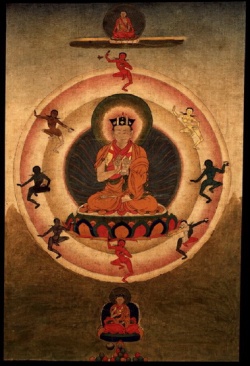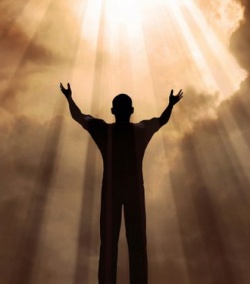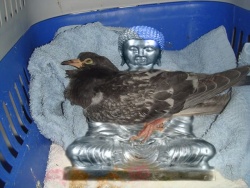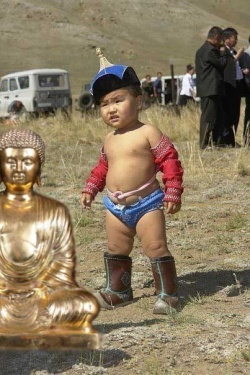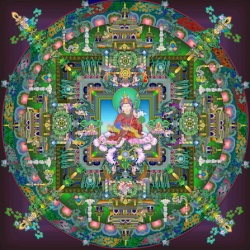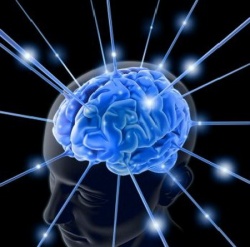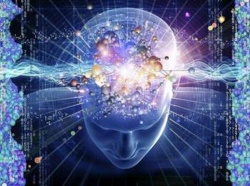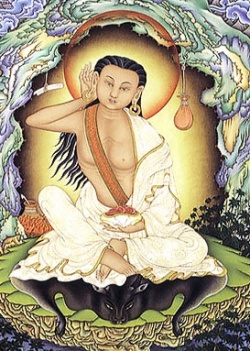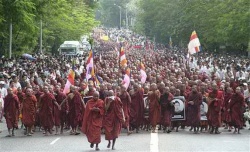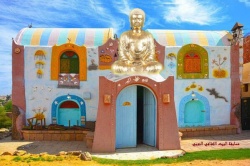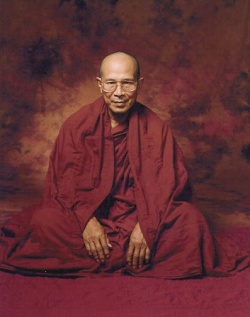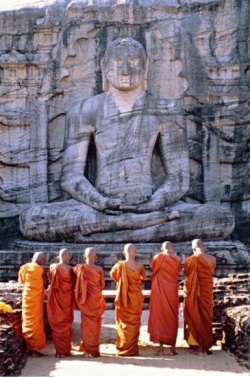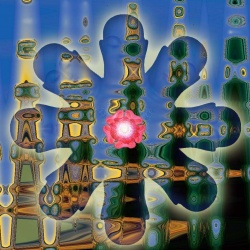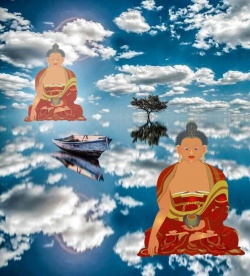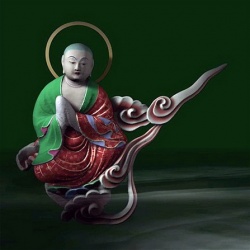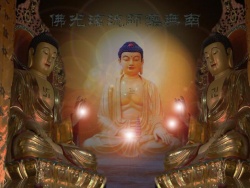Difference between revisions of "Madhyama Pratipada Hridaya : An Introduction to Buddhism"
(Created page with " MADHYAMA PRATIPADA HRIDAYA : AN INTRODUCTION TO BUDDHISM The Heart of the Middle Path : An Introduction to Buddhism Dr. Amartya Kumar Bhattacharya...") |
m (Text replacement - "one thing" to "one thing") |
||
| (6 intermediate revisions by the same user not shown) | |||
| Line 1: | Line 1: | ||
| − | + | {{DisplayImages|2030|716|1981|3984|158|530|657|3715|4128|2749|4527|812|1311|1814|2104|989|642|1026|14|3260|682|1197|3749|3755|467|1932|1839|998|1029|3862|2948|3599|1835|8|3255|4288|2550|1760|4065}} | |
[[MADHYAMA PRATIPADA HRIDAYA]] : [[AN INTRODUCTION TO BUDDHISM]] | [[MADHYAMA PRATIPADA HRIDAYA]] : [[AN INTRODUCTION TO BUDDHISM]] | ||
| Line 12: | Line 12: | ||
Phone:+913326688393/+919831046091 | Phone:+913326688393/+919831046091 | ||
| − | |||
| − | |||
| − | |||
| − | Buddham Saranam Gachchhami | + | [[Namo tassa bhagavato arahato samma Sambuddhassa]].[[Buddha Vandana]] |
| − | Dhammam Saranam Gachchhami | + | |
| − | Sangham Saranam Gachchhami | + | |
| + | [[Buddham Saranam Gachchhami]] | ||
| + | [[Dhammam Saranam Gachchhami]] | ||
| + | [[Sangham Saranam Gachchhami]] | ||
| + | |||
SECTION 1. INTRODUCTION | SECTION 1. INTRODUCTION | ||
| − | |||
| − | [[Buddhism]], a major [[world]] [[faith]], was founded by [[Lord Buddha]] in [[India]] over two thousand five hundred years ago. It has spread peacefully over much of {{Wiki|Asia}} and has millions of {{Wiki|adherents}} in [[India]], [[Nepal]], [[Bhutan]], [[Sri Lanka]], [[China]] ( including [[Tibet]] ), [[Taiwan]], [[Mongolia]], [[North]] and {{Wiki|South Korea}}, [[Japan]], [[Myanmar]], [[Thailand]], [[Cambodia]], [[Laos]], [[Vietnam]] and also in {{Wiki|Singapore}}, {{Wiki|Malaysia}} and {{Wiki|Indonesia}}. The northern extremity of [[Buddhism]] in {{Wiki|Asia}} is the [[Ivolga Monastery]] in [[Siberia]], [[Russia]]. This article is an [[exposition]] of [[Buddhism]] and in it, the [[word]] “[[faith]]” is used as a {{Wiki|synonym}} of the [[word]] “[[religion]]”. [[Buddhism]] is also called [[Saddharma]] ( the | + | I am [[writing]] this article as a devout [[Buddhist]] and a very [[orthodox]] [[Dharmic]] man; immediately after a [[pilgrimage]] to [[Buddha Gaya]]. I am also [[writing]] this with a [[scientific]] and rationalistic approach No allegory is used in this article; none is needed. [[Lord Buddha]] is the focus of this article, and the entire article revolves around Him. I am striving to {{Wiki|present}} the [[essence]] of [[Dharma]] ( [[Dharma-Dhatu]] ) in my [[own]] way. Although my family has its ancestral [[roots]] in [[Chittagong]] ( [[Chattagram]] – in {{Wiki|Bengali}} ), [[Bangladesh]] and, naturally, follows [[Theravada Buddhism]], I am trying to be as comprehensive as possible in my [[exposition]] of the [[Dharma]]. [[Sanskrit]] has been extensively used in this article, as has been some [[Pali]]. Diacritical marks have been omitted as some [[knowledge]] of [[Sanskrit]] on the part of the reader is assumed. |
| + | |||
| + | |||
| + | [[Buddhism]], a major [[world]] [[faith]], was founded by [[Lord Buddha]] in [[India]] over two thousand five hundred years ago. It has spread peacefully over much of {{Wiki|Asia}} and has millions of {{Wiki|adherents}} in [[India]], [[Nepal]], [[Bhutan]], [[Sri Lanka]], [[China]] ( including [[Tibet]] ), [[Taiwan]], [[Mongolia]], [[North]] and {{Wiki|South Korea}}, [[Japan]], [[Myanmar]], [[Thailand]], [[Cambodia]], [[Laos]], [[Vietnam]] and also in {{Wiki|Singapore}}, {{Wiki|Malaysia}} and {{Wiki|Indonesia}}. The northern extremity of [[Buddhism]] in {{Wiki|Asia}} is the [[Ivolga Monastery]] in [[Siberia]], [[Russia]]. This article is an [[exposition]] of [[Buddhism]] and in it, the [[word]] “[[faith]]” is used as a {{Wiki|synonym}} of the [[word]] “[[religion]]”. [[Buddhism]] is also called [[Saddharma]] ( the [[true faith]] ) or [[Dharma]]. | ||
| + | |||
A major point is in order here. In [[religion]], as in [[science]], whatever can be proved must be accepted as true; conversely, whatever cannot be proved must be discarded as [[pure]] speculation. The sublimity of [[Buddhism]] lies in the fact that it has a very [[scientific]] approach. The [[universe]] is in a [[constant]] [[state]] of flux. When I look up at the night sky, I am looking backwards in time because {{Wiki|light}} has a finite {{Wiki|speed}} however great that {{Wiki|speed}} may be. Moreover, I cannot see the extremities of the [[universe]] and [[logic]] tells me that the [[universe]] cannot have a spatial extremity. Similarly, the [[universe]] cannot have a zero-time extremity. {{Wiki|Modern science}} recognises time as the [[fourth dimension]] in addition to the three spatial {{Wiki|dimensions}} and also emphasises the variability of everything in the [[universe]] with [[respect]] to time. Man [[lives]] in a {{Wiki|space-time}} framework, that is, within a temporal-spatial {{Wiki|structure}}. [[Buddhism]] presents the correct [[scientific]] position that the [[universe]] has evolved and that it functions according to [[natural laws]]. | A major point is in order here. In [[religion]], as in [[science]], whatever can be proved must be accepted as true; conversely, whatever cannot be proved must be discarded as [[pure]] speculation. The sublimity of [[Buddhism]] lies in the fact that it has a very [[scientific]] approach. The [[universe]] is in a [[constant]] [[state]] of flux. When I look up at the night sky, I am looking backwards in time because {{Wiki|light}} has a finite {{Wiki|speed}} however great that {{Wiki|speed}} may be. Moreover, I cannot see the extremities of the [[universe]] and [[logic]] tells me that the [[universe]] cannot have a spatial extremity. Similarly, the [[universe]] cannot have a zero-time extremity. {{Wiki|Modern science}} recognises time as the [[fourth dimension]] in addition to the three spatial {{Wiki|dimensions}} and also emphasises the variability of everything in the [[universe]] with [[respect]] to time. Man [[lives]] in a {{Wiki|space-time}} framework, that is, within a temporal-spatial {{Wiki|structure}}. [[Buddhism]] presents the correct [[scientific]] position that the [[universe]] has evolved and that it functions according to [[natural laws]]. | ||
| − | |||
| − | Too well known to be repeated here, the [[life]] of [[Lord Buddha]] ( 563-483 B.C.E. ) is a story of the [[life]] of one of the greatest [[human beings]] who ever lived. His father was [[King Suddhodana]], [[king]] of the [[Shakya]] {{Wiki|kingdom}} whose capital was at [[Kapilavastu]], and His mother was [[Queen]] [[Mayadevi]]. At the age of twenty-nine, {{Wiki|Prince}} [[Siddhartha Gautama]] left home and after six years of ceaseless striving and [[meditation]] [[attained]] His [[Nirvana]] or [[Enlightenment]] at [[Uruvela]], now called [[Buddha Gaya]]. At this juncture, only one point is mentioned. [[Lord Buddha]] achieved His [[liberation]] through [[meditation]] and so [[meditation]] is what He primarily [[taught]]. [[Lord Buddha]] is also called [[Shakyamuni Buddha]]. Followers of the [[Vajrayana]] school of [[Mahayana Buddhism]] call Him Sarvarthasiddha and, sometimes, [[Shakyasimha]]. | + | ===[[LIFE OF LORD BUDDHA]]=== |
| + | |||
| + | |||
| + | Too well known to be repeated here, the [[life]] of [[Lord Buddha]] ( 563-483 B.C.E. ) is a story of the [[life]] of one of the greatest [[human beings]] who ever lived. His father was [[King Suddhodana]], [[king]] of the [[Shakya]] {{Wiki|kingdom}} whose capital was at [[Kapilavastu]], and His mother was [[Queen]] [[Mayadevi]]. At the age of twenty-nine, {{Wiki|Prince}} [[Siddhartha Gautama]] left home and after six years of ceaseless striving and [[meditation]] [[attained]] His [[Nirvana]] or [[Enlightenment]] at [[Uruvela]], now called [[Buddha Gaya]]. At this juncture, only one point is mentioned. [[Lord Buddha]] achieved His [[liberation]] through [[meditation]] and so [[meditation]] is what He primarily [[taught]]. [[Lord Buddha]] is also called [[Shakyamuni Buddha]]. Followers of the [[Vajrayana]] school of [[Mahayana Buddhism]] call Him [[Sarvarthasiddha]] and, sometimes, [[Shakyasimha]]. | ||
| + | |||
| + | |||
| + | ===[[PHILOSOPHY OF BUDDHISM]]=== | ||
| + | |||
| − | |||
The [[Sanskrit]] [[word]] “[[Dharma]]” literally means “Property”. For example, one says that the [[Dharma]] of [[fire]] is to burn. This means that the property of [[fire]] is to burn. The [[fire]] cannot be separated from its capacity to burn. Similarly, the literal meaning of [[Dharma]] ( [[Dhamma]] – in [[Pali]] ) of man is the basic property of man from which he cannot be separated. This means the [[spirituality]] [[inherent]] in man. | The [[Sanskrit]] [[word]] “[[Dharma]]” literally means “Property”. For example, one says that the [[Dharma]] of [[fire]] is to burn. This means that the property of [[fire]] is to burn. The [[fire]] cannot be separated from its capacity to burn. Similarly, the literal meaning of [[Dharma]] ( [[Dhamma]] – in [[Pali]] ) of man is the basic property of man from which he cannot be separated. This means the [[spirituality]] [[inherent]] in man. | ||
| − | |||
| − | Man's quest for an end to his [[suffering]] has led him into an exploration of his [[inner self]], its working and its dysfunctional {{Wiki|behaviour}} under certain circumstances. Under such conditions,a radical shift in [[consciousness]], [[perception]] and [[attitude]] is the only succour for a tormented [[mind]] ( [[Chitta]], [[Manas]] ). This process, involving the destruction of [[suffering]], is based on the [[Four Noble Truths]] ( Chaturaryasatya ) enunciated by [[Lord Buddha]] which are as follows: | + | The [[objective]] of [[Buddhism]] is [[Nirvana]] ( [[liberation]] ) and [[Bodhi]] ( [[Enlightenment]] ). The [[word]] [[Buddhi]] means {{Wiki|intellect}} and the [[word]] [[Bodha]] means to understand; it is from these words that the [[word]] [[Bodhi]] is derived. Who is it that seeks [[Nirvana]], [[Bodhi]], and to understand? It is “I” ( Aham ), who is [[writing]] right now. [[Understanding]] sharpens me, refines me, contextualises me, and keeps me on the [[path]] to [[Bodhi]] and [[Nirvana]]. I shall have an opportunity to delve deeply into the issue of “I” in [[Buddhism]] later. Deep [[understanding]] ( [[Anubodha]] ) is the context of [[Bodhi]], and [[Nirvana]]. Rephrasing [[Nagarjuna]], the founder of the [[Madhyamika school]] of [[Mahayana Buddhism]], [[Shunyata]] ( [[emptiness]] ) is the absence of [[ignorance]]. [[Avidya Paramam Malam]] ( [[Ignorance]] is the greatest [[impurity]] ) is what [[Lord Buddha]] said. [[Nagarjuna]] can be further re-interpreted to give to me the [[understanding]] that [[Nirvana]] is not only available for a man in [[Samsara]] ( [[empirical]] and [[phenomenal world]] ) but, as I am immersed in [[Samsara]], it is only possible within it, [[subject]] to the [[condition]] that the [[Arya Ashtanga Marga]] ( [[Noble Eightfold Path]] ) is rigorously followed. The conclusion [[Nagarjuna]] reached, in his seminal work [[Mula Madhyamika Karika]], is that all things lack a fixed [[essence]] ( [[Swabhava]] ) and that is why they are amenable to change. In other words, change is possible only if entities are devoid or [[empty]] ( [[Shunya]] ) of [[Swabhava]]. [[Buddhism]] has two main branches, [[Theravada]] and [[Mahayana]], the difference between the two will be explained in due course. |
| + | |||
| + | Man's quest for an end to his [[suffering]] has led him into an exploration of his [[inner self]], its working and its dysfunctional {{Wiki|behaviour}} under certain circumstances. Under such conditions,a radical shift in [[consciousness]], [[perception]] and [[attitude]] is the only succour for a tormented [[mind]] ( [[Chitta]], [[Manas]] ). | ||
| + | |||
| + | |||
| + | This process, involving the destruction of [[suffering]], is based on the [[Four Noble Truths]] ( [[Chaturaryasatya]] ) enunciated by [[Lord Buddha]] which are as follows: | ||
| + | |||
| + | |||
| − | 1. [[Life]] contains [[suffering]]. ( Duhkhasatya ) | + | 1. [[Life]] contains [[suffering]]. ( [[Duhkhasatya]] ) |
| − | 2. [[Suffering]] has a [[cause]], and the [[cause]] can be known. ( Samudayasatya ) | + | 2. [[Suffering]] has a [[cause]], and the [[cause]] can be known. ( [[Samudayasatya]] ) |
3. [[Suffering]] can be brought to an end. ( [[Nirodhasatya]] ) | 3. [[Suffering]] can be brought to an end. ( [[Nirodhasatya]] ) | ||
| − | 4. The [[path]] to end [[suffering]] has eight parts. ( Margasatya ) | + | 4. The [[path]] to end [[suffering]] has eight parts. ( [[Margasatya]] ) |
| + | |||
| + | |||
| + | |||
| + | [[Lord Buddha]] also laid out the [[Noble Eightfold Path]] ( [[Arya Ashtanga Marga]] ) which is given below: | ||
| + | |||
| − | |||
| − | • [[Right view]] ( [[Samyak | + | • [[Right view]] ( [[Samyak Dristi]] ) |
| − | • [[Right intention]] ( [[Samyak | + | • [[Right intention]] ( [[Samyak Sankalpa\\ ) |
| − | • [[Right speech]] ( [[Samyak | + | • [[Right speech]] ( [[Samyak Vakya]] ) |
| − | • [[Right action]] ( [[Samyak | + | • [[Right action]] ( [[Samyak Karma]] ) |
| − | • [[Right livelihood]] ( [[Samyak]] | + | • [[Right livelihood]] ( [[Samyak Jivika]] ) |
| − | • [[Right effort]] ( [[Samyak | + | • [[Right effort]] ( [[Samyak Vyayama]] ) |
| − | • [[Right mindfulness]] ( [[Samyak | + | • [[Right mindfulness]] ( [[Samyak Smriti]] ) |
| − | • [[Right concentration]] ( [[Samyak | + | • [[Right concentration]] ( [[Samyak Samadhi]] ) |
| − | This [[path]] is also known as The [[Middle Way]] ( [[Madhyama Pratipada]] ) because it is neither too easy nor too difficult. The first five parts of the [[path]] involve maintaining a lifestyle full of [[virtue]] ( [[Shila]], [[Pancha Shila]] for householders, [[Ashta]] [[Shila]] for householders | + | This [[path]] is also known as The [[Middle Way]] ( [[Madhyama Pratipada]] ) because it is neither too easy nor too difficult. The first five parts of the [[path]] involve maintaining a lifestyle full of [[virtue]] ( [[Shila]], [[Pancha Shila]] for householders, [[Ashta]] [[Shila]] for householders practicing [[Brahmacharya]], that is [[celibacy]], and [[Dasha Shila]] for [[monks]] ) while the last three pertain to the [[practice of meditation]]. The [[practice of meditation]] lies at the [[heart]] of the [[spiritual practice]] of [[Dharmic]] or [[Adhyatmic]] ( [[spiritual]] ) [[people]]. To be a [[Buddhist]] means to distinguish between [[Buddhist]] and [[non-Buddhist]] acts, between [[ignorance]] and [[Enlightenment]], between [[Samsara]] and [[Nirvana]]. |
Named [[Siddhartha]] which means “one who has accomplished his task”, by His [[parents]] when He was born, [[Lord Buddha]] claimed that He was a [[human being]], [[pure]] and simple. He claimed that whatever He had were [[human]] qualities. He always denied that He was [[divine]] or that He was divinely-inspired. Yet he was [[divinity]] personified. His family [[name]] was [[Gautama]]. His encounter with [[Angulimala]], the robber, reveals to me His [[divinity]]. [[Lord Buddha]] referred to Himself as the [[Tathagata]] ( literally, One who has come to [[Truth]], that is, One who has discovered [[Truth]] ). | Named [[Siddhartha]] which means “one who has accomplished his task”, by His [[parents]] when He was born, [[Lord Buddha]] claimed that He was a [[human being]], [[pure]] and simple. He claimed that whatever He had were [[human]] qualities. He always denied that He was [[divine]] or that He was divinely-inspired. Yet he was [[divinity]] personified. His family [[name]] was [[Gautama]]. His encounter with [[Angulimala]], the robber, reveals to me His [[divinity]]. [[Lord Buddha]] referred to Himself as the [[Tathagata]] ( literally, One who has come to [[Truth]], that is, One who has discovered [[Truth]] ). | ||
| − | [[Lord Buddha]] did not believe in a [[metaphysical]] [[soul]], that is He espoused Anatmata or [[Nairatmya]]. The [[Sanskrit]] [[word]] “[[Atman]]” and the [[Pali]] [[word]] “[[Atta]]” mean [[Soul]]. His [[first sermon]], at [[Sarnath]] near [[Varanasi]], is called the | + | [[Lord Buddha]] did not believe in a [[metaphysical]] [[soul]], that is He espoused [[Anatmata]] or [[Nairatmya]]. The [[Sanskrit]] [[word]] “[[Atman]]” and the [[Pali]] [[word]] “[[Atta]]” mean [[Soul]]. His [[first sermon]], at [[Sarnath]] near [[Varanasi]], is called the [[Dharmachakrapravartana Sutra]] ( [[Sutta]] – in [[Pali]] ) and His second {{Wiki|sermon}}, delivered five days later, also at [[Sarnath]], is called the [[Anatmalakshana Sutra]]. [[Lord Buddha]] said in the beginning of the [[Anatmalakshana Sutra]] “[[Rupam Anatma]], [[Vedana Anatma]], [[Sangya Anatma]], [[Samskara Anatma]], [[Vigyana Anatma]]” ( [[Material Form]] is not the [[Soul]], [[Sensation]] is not the [[Soul]], [[Perception]] is not the [[Soul]], Pre-disposition is not the [[Soul]], [[Consciousness]] is not the [[Soul]],). |
| + | |||
| + | |||
| + | In the course of yet another {{Wiki|sermon}}, at [[Shravasti]], [[Lord Buddha]] said “ There is an {{Wiki|unborn}}, [[unchanging]], uncreated, and [[unconditioned]]. If there were not, this that which is {{Wiki|unborn}}, [[unchanging]], uncreated, and [[unconditioned]], there could not be any escape from what is born, changing, created, and [[conditioned]]. But since there is an {{Wiki|unborn}}, [[unchanging]], uncreated, and [[unconditioned]], there is an escape from what is born, changing, created and [[conditioned]]. ”. | ||
| + | |||
| + | With these words, [[Lord Buddha]] pointed His finger towards the [[Paramartha-Satya]] ( [[ultimate truth]] ), which is [[Nirvana]]. At another point, [[Lord Buddha]] mentioned that one kind of [[desire]] is [[desire for existence]] ( [[Bhava-Trishna]] ). In the [[Dhammapada]], it is said that “ [[Sarva Dharma Anatma]]. ”, that is all entities are without [[own-being]]. It must be kept in [[mind]] that [[Lord Buddha's]] [[attitude]] was {{Wiki|practical}} and His primary [[concern]] was the {{Wiki|salvation}} of [[suffering]] [[human beings]]. His [[silence]] in response to speculative [[metaphysical]] questions indicated His [[transcendental]] [[spirit]]; that of rising to a plane above lesser [[beings]]. | ||
| + | |||
| + | According to [[Lord Buddha]], man is his [[own]] [[master]]. “[[Atta hi attano natho]]” are the exact words of [[Lord Buddha]]. He also said “[[Atmadvipa viharatha, atmasharana ananyasharana]]” meaning “Dwell making yourself your [[island]] ( that is [[refuge]] ), and not anyone else as your [[refuge]]”. Man is however unaware of this fact and abdicates his {{Wiki|responsibility}} of controlling his {{Wiki|future}}, even [[death]]. | ||
| + | |||
| + | This is so because man is, in a deep [[philosophical]] [[sense]], deluded ( Mohagrasta ), asleep and unaware of his [[true nature]]. He normally identifies himself with his [[body]], which was born and hence will [[die]], some day. This gives rise to [[vices]], insecurity and [[belief]] in that what is not. Man [[lives]] in [[illusions]] ( [[Moha]] ); the [[illusion]] that he will never fall sick, the [[illusion]] that no harm will ever befall him. He also believes that he has relatives and friends and, if he clings onto them tightly enough, he will one day, after [[death]], go to the nebulous place called [[heaven]]. But it is not true. | ||
| + | |||
| + | The lacuna in man's [[thinking]] becomes disturbingly clear to him when he finds that he is [[suffering]]. When a man [[suffers]], the [[world]] seems to collapse around him. Man needs to be [[awakened]] and when this [[awakening]] process is complete, man will rise from the ashes of the [[world]] of the [[senses]] that he has just burnt to the [[world]] of [[pure consciousness]]. [[Buddhism]] is a journey where a man starts asleep and ends up awake. In doing so, he sheds aside [[nothingness]] to [[awaken]] to a single [[state]] of Being. The process by which this takes place is [[meditation]]. | ||
| + | |||
| + | [[Lord Buddha's]] title means one who [[is awake]]. He is considered to be the messiah who showed the [[path]] to {{Wiki|eternity}}. [[Lord Buddha]] gave His [[teaching]] “for the good of many, for the [[happiness]] of many, for showing [[compassion]] to the [[world]]” ( [[Bahujanahitaya]], [[Bahujanasukhaya]], [[Lokanukampaya]] ). He told man that though he is asleep, the capacity to be [[awakened]] is in him and also [[taught]] man the [[path to awakening]]. But man must walk that [[path]] himself, alone. Man must realise that he is always alone, whether it be high atop the [[mountains]], in the company of his relatives or in the morning crowd in the downtown of a metropolitan city. A positive [[attitude]] to aloneness can develop in man when he can take a [[mental]] sword and cleave a {{Wiki|distinction}} between aloneness and loneliness. Loneliness has a negative connotation in the [[sense]] that it implies a [[craving]] for company of other [[human beings]], the exact opposite of the self-sufficiency implied by aloneness. | ||
| + | |||
| + | The capacity to tread the [[path]] to [[Nirvana]] is already in man, he just has to use it. In the [[Dharmachakrapravartana Sutra]], [[Lord Buddha]] said that [[Nirvana]] is not [[subject]] to [[grief]], [[defilement]] ( [[Klesha]] ), {{Wiki|disease}} ( [[Vyadhi]] ), [[decay]] ( [[Jara]] ), and [[death]] ( [[Mrityu, Marana]] ). In other words, [[Nirvana]] is beyond [[cause and effect]], that is, it {{Wiki|transcends}} [[conditioned phenomena]]. [[Lord Buddha]] also said “[[Nirvanam Paramam Sukham]]”. [[Nirvana]] is [[Apratitya-samutpanna]] and [[Asamskrita]] ( [[unconditioned]] ) and, according to [[Vasubandhu]] of the [[Yogachara]] ( the [[practice]] of [[Yoga]] ) school of [[Mahayana Buddhism]], is the [[Parinishpanna Swabhava]] ( true [[self-nature]] of Being ). It is [[interesting]] to note that in the [[Lankavatara Sutra]], a [[Mahayana Sutra]] associated with the [[Yogachara school]], [[Nirvana]] is described as the [[seeing]] of everything as it is. [[Nirvana]] is a positive [[Absolute]] and is [[Nitya]] ( without beginning and end ). [[Nirvana]] means a [[state]] of [[Mukti]] which means freedom or [[Vimukti]] which means [[absolute]] freedom. [[Nirvana]] also denotes [[Satya]] which means [[Truth]] and [[Shanti]] which means [[Peace]]. | ||
| + | |||
| + | A {{Wiki|synonym}} for [[Nirvana]] is [[Moksha]] ( [[liberation]] ). [[Nirvana]] is a [[state of absolute]] [[perfection]]. In [[mystical]] [[language]], [[Nirvana]] is the [[experience]] of [[standing]] face-to-face with [[Reality]]. [[Nirvana]] is equated with [[Bodhi]] and is the Paramartha-Satya. [[Nirvana]] is sometimes expressed as negative of negative such as the [[cessation of suffering]], of [[craving]], of [[aversion]], etc. This need not result in any [[confusion]]. In [[Sanskrit]], sometimes positive things are expressed as negatives of negatives as the [[word]] “Arogya” which means recuperation from {{Wiki|illness}} and the [[word]] “[[Amrita]]” which means [[immortal]]. Further, as [[mathematics]] proves, negative of negative is always positive. [[Nirvana]] is a freeing from the chains of a false [[sense of individuality]]. [[Nirvana]] is a [[state]] of [[non-duality]] ( [[Wikipedia:Advaita Vedanta|Advaita]] or [[Advaya]] ); a [[state]] where the [[illusion]] of a false [[sense]] of “I” ( [[Parikalpita]] [[Swabhava]] ) does not [[exist]]. Expressed differently, [[liberation]] from the [[illusion]] of separateness of the {{Wiki|individual}} [[Self]] from the Whole is [[Nirvana]]. | ||
| + | |||
| + | |||
| + | |||
| + | ==FREEDOM IS, [[NIRVANA]] IS, [[TRUTH]] IS=== | ||
| + | |||
| + | |||
| + | |||
| + | According to [[Buddhism]], everything is [[relative]] and [[impermanent]] ( [[Anitya]] ) in the [[empirical]], [[conditioned world]]. It is pertinent here to remember the statement of the {{Wiki|Greek}} [[philosopher]] {{Wiki|Heraclitus}} who said “You cannot step twice into the same [[river]], for fresh waters are ever flowing in upon you”. | ||
| + | |||
| + | This means that although I may continue to see the same [[river]] externally from a gross point of view, the [[water]] {{Wiki|molecules}} I am [[seeing]] at a particular location at any [[moment]] are different from the [[water]] {{Wiki|molecules}} the [[moment]] before and the [[moment]] after. | ||
| + | |||
| + | [[One thing]] disappears, {{Wiki|conditioning}} the [[appearance]] of the next in a series of [[cause and effect]]. Everything is in a [[state]] of becoming something else the next [[moment]]. | ||
| + | |||
| + | A [[wheel]] cannot be separated from its {{Wiki|movement}}. | ||
| + | |||
| + | There is no static [[wheel]] “behind” the [[wheel]] in {{Wiki|motion}}. Things change over time. Everything originates dependent on other factors. Each [[entity]] is [[Pratitya-samutpanna]] ( [[conditioned]] ) as well as [[Pratitya-samutpada]] ( {{Wiki|conditioning}} ). | ||
| + | |||
| + | The [[Law of Dependent Origination]] is central to [[Buddhism]]. For example, [[anger]] cannot arise by itself without a [[cause]]. | ||
| + | |||
| + | The [[five aggregates]], [[Rupa]], [[Vedana]], [[Sangya]], [[Samskara]] and [[Vigyana]], all of which are identified as [[Anatma]] ( non-Soul ) by [[Lord Buddha]] in the Anatmalakshana [[Sutra]], are called the [[Pancha Skandha]] ( the [[five aggregates]] ). | ||
| + | |||
| + | [[Sensations]] ( [[Vedana]] ) of the [[physical world]] of [[forms]] ( [[Rupa]] ) are received by the five [[physical]] [[sense organs]] ( [[Indriya]] ) such as the {{Wiki|nose}}. The [[mind]] [[feels]] the {{Wiki|mental world}}. | ||
| + | |||
| + | |||
| + | |||
| + | The five [[physical]] [[sense organs]] and the [[mind]] are called the six sensory bases. [[Sensations]] lead to [[perceptions]] ( [[Sangya]] ), which in turn lead through pre-dispositions ( [[Samskara]] ), to [[consciousness]] ( [[Vigyana]] ). | ||
| + | |||
| + | In the [[Yogachara school]] of [[Mahayana Buddhism]], the {{Wiki|concept}} of [[Alaya-Vigyana]] ( literally, the abode of [[consciousness]], but commonly translated as [[store-consciousness]] ) is introduced. The [[Alaya-Vigyana]], which maintains the {{Wiki|continuum}} of [[consciousness]], is the [[mind]]; hence this school is also called the [[Chittamatratavada]] school. | ||
| + | |||
| + | Other names of the same school are [[Agamanuyayi Vigyanavada]] and [[Vigyaptimatratavada]]. The fundamental {{Wiki|concept}} of the [[Yogachara school]] may be expressed by the proposition that the [[Parinishpanna Swabhava]] is realised when man pierces ( [[Patibheda]] ) through his [[Parikalpita Swabhava]] and [[Paratantra Swabhava]] ( [[conditioned]] [[self-nature]] ). | ||
| + | |||
| + | The Alaya-Vigyana, as [[conceived]] in [[Mahayana Buddhism]], is a [[permanent]] [[entity]]. It is also the [[Tathagatagarbha]] ( [[Buddha-Matrix]] ), the basis on which a man can become a [[Buddha]]. | ||
| + | |||
| + | So, latent in every man is a [[Buddha]]-like {{Wiki|faculty}} called [[Buddha-Dhatu]] ( [[Buddha Nature]] ). [[Right meditation]] leads to [[spiritual]] [[Enlightenment]], which is nothing but the full [[manifestation]] of the [[Buddha-Dhatu]] ( or [[Tathagata-Dhatu]] ) in man. Thus, any man can develop himself through appropriate [[practice]], that is [[meditation]], and become a [[Buddha]]. Anyway, for an average man, the summation of all [[physical]] and {{Wiki|mental processes}}, {{Wiki|processes}} in [[constant]] flux, is [[perceived]] [[empirically]] as “I”. | ||
| + | |||
| + | |||
| + | |||
| + | The [[empirical]] “I” is {{Wiki|ephemeral}} and [[impermanent]], and is [[Samvriti-Satya]] ( [[conventional truth]] ). [[Conscious]] of something, one reacts [[mentally]]. The [[mental]] reactions are of two types : [[craving]] and [[aversion]]. | ||
| + | |||
| + | [[Craving]] ( [[Trishna]], [[Raga]] ) and [[aversion]] ( [[Dvesha]] ) both lead to [[suffering]]; it is [[self-evident]] that [[aversion]] results in [[suffering]] and [[craving]] results in [[suffering]] because if the [[object]] of [[craving]] remains out of reach, there is [[suffering]]. Thus, ultimately, whatever is [[impermanent]] is [[Duhkha]] or [[suffering]]. [[Trishna Nirodha]], [[Upadana]] ( [[clinging]] ) [[Nirodha]]. | ||
| + | |||
| + | |||
| + | |||
| + | The renowned [[Wikipedia:Sage (sophos|sage]] [[Buddhaghosa]], the writer of the [[Visuddhimagga]] ( [[Vishuddhi Marga]], The [[Path of Purification]] ), has dwelt elaborately on [[suffering]]. Taking the lead from [[Nagarjuna]], I posit that [[Duhkha]] is transient; it arises dependent on something else and also decays into [[extinction]]. | ||
| + | |||
| + | Thus [[Duhkha]] lacks a [[Swabhava]] and is characterised by [[Nihswabhava]] ( absence of [[Self-Nature]] ). Thus [[Duhkha]] is [[empty]] ( [[Shunya]] ). I am, therefore, led to formulate the proposition: [[Duhkhameva Shunyam]]. | ||
| + | |||
| + | The [[perception]] of the [[emptiness]] of [[Duhkha]] allows one to let go of [[Duhkha]] and thus be released of the hold that [[Duhkha]] has on him. This is, of course, intended as a [[Mahayana]] [[Buddhist]] {{Wiki|theoretical}} complement to [[Vipashyana]] [[meditation]] and is in no way a substitute for [[Vidarshana]] [[meditation]]. | ||
| + | |||
| + | I also hold that the notion of [[Buddha-Dhatu]] is a very {{Wiki|productive}} {{Wiki|concept}}. My [[meditation]] becomes better and I achieve my objectives in [[meditation]] more easily when I remember during [[meditating]] that I have [[Buddha-Dhatu]] in me. | ||
| + | |||
| + | |||
| + | |||
| + | It may be mentioned, at this stage, that practitioners who are extremely advanced [[spiritually]] are called by the [[name]] [[Arhat]] in [[Theravada Buddhism]] and [[Bodhisattva]], or aspirants to [[Buddhahood]] ( [[Buddhatva]], or as is rather more commonly termed [[Buddhata]] ) in [[Mahayana Buddhism]]. | ||
| + | |||
| + | A [[Bodhisattva]] is any man who has taken a [[vow]] to follow the [[path]] to [[Buddhatva]] taking all other [[sentient beings]] with him. A [[monk]] ( [[Bhikshu]] ) and a lay [[disciple]] ( [[Upasaka]] ) are both [[Bodhisattvas]]. | ||
| + | |||
| + | [[Sattva]] means a [[sentient being]]. In [[Mahayana Buddhism]], [[mythological]] figures such as [[Avalokiteshvara]], [[Manjushri]], [[Kshitigarbha]] and [[Samantabhadra]] are prominent [[Bodhisattvas]]. | ||
| + | |||
| + | The [[word]] “[[Mahasattva]]” ( [[great being]] ) is often used in {{Wiki|conjunction}} with the [[word]] “[[Bodhisattva]]” in the [[Mahayana Buddhist Sutras]]. The term “[[Maha]]”, in [[Mahayana Buddhism]], is due to its {{Wiki|ideal}} of an aspirant to [[Buddhatva]], that is, a [[Bodhisattva]], endeavouring to take all [[sentient beings]] along with him on the way to [[Nirvana]]. [[Avalokitesvara]] is considered to be a [[symbol]] of [[compassion]] while [[Manjushri]] is considered to be a [[symbol]] of [[wisdom]]. | ||
| + | |||
| + | The {{Wiki|concept}} of two categories of [[truth]], [[Samvriti-Satya]] and [[Paramartha-Satya]], is an [[essential]] [[element]] of [[Buddhism]]. The [[word]] “[[Samvrita]]” literally means “covered”. The [[Mahayana Sutralankara]], written by [[Asanga]], says of [[Samvriti-Satya]] that a [[Pudgala]] ( [[person]] ) [[exists]] only in [[Pragyapti]] ( designation ) but not in [[Dravya]] ( [[substance]] ). [[Asanga's]] lead is followed throughout this article where the [[Samvriti-Satya]] of the [[empirical]] man is considered in the context of [[Anatmata]] or [[Nairatmya]]. | ||
| + | |||
| + | |||
| + | In response to questioning by {{Wiki|devotees}} in the {{Wiki|kingdom}} of [[Kosala]] as to the importance or unimportance of [[belief]], [[Lord Buddha]] pointed out the {{Wiki|distinction}} between [[knowing]] and believing. Believing always connotes a second-hand approach to [[Truth]]; [[knowing]] about something through the [[experience]] of someone else. | ||
| + | |||
| + | [[Knowing]] means a first-hand [[direct knowledge]] of [[Truth]] and the result of this {{Wiki|distinction}} is that the modicum of [[doubt]] that always accompanies [[belief]] is absent in [[knowledge]]. | ||
| + | |||
| + | Freedom of [[thought]] is permitted by [[Lord Buddha]] to His {{Wiki|devotees}} so that they can discriminate and find [[Truth]]. | ||
| + | |||
| + | [[Nirvana]] cannot be had via someone else's [[knowledge]]. | ||
| + | |||
| + | A contemporary [[scholar]] [[Kazuaki Tanahashi]] describes an incident in [[Japan]] where a [[Buddhist monk]] illustrated to his [[disciples]] the power of what might be called “positive [[emptiness]]” in the [[mind]]. A [[void]] in the [[mind]] can be filled with [[spirituality]] by [[virtue]] of positive [[thinking]]. | ||
| + | |||
| + | A {{Wiki|Chinese}} [[monk]], [[Kyong Ho]], echoed this [[feeling]] when he advised one to accept the anxieties and difficulties of this [[life]]. | ||
| + | |||
| + | He also advised [[people]] to use their will to bring [[peace]] between peoples. This is particularly relevant in the {{Wiki|modern}} [[world]] where {{Wiki|democracy}} and egalitarianism are taken for granted. | ||
| + | |||
| + | A [[Japanese]] [[monk]] [[Dogen]] [[taught]] that [[Samadhi]] ( which is a [[transcendental]] [[state of mind]] ) led to [[Enlightenment]] of those who found [[Enlightenment]] in [[India]] and [[China]]. | ||
| + | |||
| + | The [[Indian]] savant and [[Nobel Laureate]] in {{Wiki|Literature}}, {{Wiki|Rabindranath Tagore}} venerated [[Lord Buddha]] above all other great [[spiritual]] leaders and wrote in {{Wiki|Bengali}} ( which is derived from [[Sanskrit]] through [[Pali]] ) several articles on [[Lord Buddha]]. | ||
| + | |||
| + | [[John Blofeld]], an ardent [[Buddhist]], has the following advice for the laity “Do not permit the events of your daily [[life]] to bind you, but never withdraw yourselves from them”. [[Buddhism]] also strongly believes in the {{Wiki|theory}} of [[Karma]] ( as you sow, so shall you reap ) and in the {{Wiki|concept}} of [[rebirth]]. | ||
| + | |||
| + | There are two types of [[Karma]], [[Kushala Karma]] or [[good actions]] and [[Akushala Karma]] or bad [[actions]]. | ||
| + | |||
| + | [[Kushala]] [[Karma]] is [[Dharmic]] while [[Akushala]] [[Karma]] is [[Adharmic]]. The result of both types of [[Karma]] are called [[Karma]] [[Phala]], which correspond to the type of [[Karma]] performed. | ||
| + | |||
| + | |||
| + | ===[[MEDITATION IN BUDDHISM]]=== | ||
| + | |||
| + | |||
| + | |||
| + | He searched, He [[meditated]], He found: this aptly summarises the [[awakening]] of [[Lord Buddha]]. | ||
| + | |||
| + | When a man [[suffers]], it is useless for him to talk of [[God]], or to fast and otherwise to torture his [[body]] if his [[suffering]] is not reduced by any or all of these. | ||
| + | |||
| + | [[Lord Buddha]] realised this fact and after His [[awakening]] [[taught]] the [[Four Noble Truths]] and the [[Noble Eightfold Path]]. | ||
| + | |||
| + | [[Meditation]] is one [[form]] of [[mental culture]] ( [[Bhavana]] ). | ||
| + | |||
| + | In [[meditation]], what is required of man is to effect a radical shift in [[consciousness]] from the finite to the [[infinite]] using [[right concentration]]. | ||
| + | |||
| + | [[Concentration]] is also called [[Chittaikagrata]] in [[Sanskrit]]. | ||
| + | |||
| + | The [[concentrated]] focus is always on the elimination of [[suffering]]. | ||
| + | |||
| + | The [[law of cause and effect]] is at work here too. If one is deluded, one [[suffers]]. | ||
| + | |||
| + | If one studies the [[Four Noble Truths]], one sees that man should identify the [[cause of suffering]] and systematically go about destroying it using the [[Noble Eightfold Path]]. | ||
| + | |||
| + | The result of [[meditation]] is tremendous. One {{Wiki|transcends}} the [[boundaries]] of his [[body]]; he [[senses]] that the entire [[universe]] has become his [[body]]. | ||
| + | |||
| + | He [[senses]] that he has exchanged a weak [[mind]] for a strong one. He [[senses]] that though he may continue to reside in his {{Wiki|mortal}} [[body]], his [[consciousness]] has become irreversibly altered. He [[feels]] himself being pervaded by [[peace]]. | ||
| + | |||
| + | He becomes [[awakened]]; [[Prabuddha]]. [[Lord Buddha]] did not give the [[Dharma]] for strong wills only; His statements are just as applicable to weaker [[minds]] provided they have the [[determination]] to follow Him. He asked for nothing more than [[courage]] and promised {{Wiki|eternity}}. | ||
| + | |||
| + | |||
| + | An explanation as to the types of [[meditation]] in vogue is in order here. [[Vipashyana]] or [[Vidarshana]] ( [[Pashyana]] or [[Darshana]] means to see in an ordinary way; [[Vipashyana]] or [[Vidarshana]] means to see in a special way, that is, with [[Insight]] ) [[meditation]] is practised in [[south]] {{Wiki|Asia}} and other countries which [[practice]] [[Theravada]] ( meaning, the way of the [[Elders]] ) [[Buddhism]]. [[Lord Buddha]] presented the technique of [[Vipashyana]] [[meditation]] in the [[Mahasatipatthana Sutta]] ( [[Mahasmritipratishthana Sutra]] ). | ||
| + | |||
| + | The [[Mahasatipatthana Sutta]] is found in the [[Digha]] ( [[Dirgha]] ) [[Nikaya]] and the [[Satipatthana Sutta]] is found in the [[Majjhima]] ( [[Madhyama]] ) [[Nikaya]]. | ||
| + | |||
| + | [[Zen]] [[Buddhist practice]] is performed in {{Wiki|East Asia}}, that is, in [[China]], [[North]] and {{Wiki|South Korea}}, [[Taiwan]] and [[Japan]], which are among the countries that [[practice]] [[Mahayana]] ( meaning, the [[great vehicle]] ) [[Buddhism ]]. | ||
| + | |||
| + | In fact, [[Zen]] is one of the eight schools of [[Mahayana Buddhism]]. [[Meditation]] is something that cannot be fully explained in words, it has to be [[experienced]] to be understood completely. [[Knowing]] about [[meditation]] is one thing; [[knowing]] [[meditation]] is quite another. | ||
| + | |||
| + | A man can sit alone, cross-legged, in a quiet room in the full [[lotus posture]] ( [[Padmasana]] ) or, failing that, in the [[half-lotus]] [[posture]] ( [[Bhadrasana]] ) and try to enter into [[Vipashyana]] [[meditation]] ( the third [[posture]] of sitting is called [[Sukhasana]], literally meaning “the [[posture]] that gives [[happiness]]” ). | ||
| + | |||
| + | [[Padmasana]] is also called [[Dhyanasana]] in the [[Vajrayana]] ( meaning, the [[thunderbolt]] [[vehicle]] ) school of [[Mahayana Buddhism]]. | ||
| + | |||
| + | |||
| + | |||
| + | If one is unable to start doing [[meditation]] oneself, one should take the help of a [[Guru]] ( literally, one who dispels {{Wiki|darkness}} ) who will guide him in the initial stages. One must sit, preferably, in the [[lotus posture]] with one's spine erect. | ||
| + | |||
| + | There must be no slumping of the back, the head should be straight as if suspended by means of a string. | ||
| + | |||
| + | Another analogy adopted is that the head should be straight as if bearing the sky on its top. The hands may be placed in the [[Bhumisparsha Mudra]] ( [[Bhumisparsha]] gesture ), a [[Mudra]] in which I find so many [[statues]] of [[Lord Buddha]]. | ||
| + | |||
| + | [[Bhumisparsha]] literally means “ [[touching]] the ground”. This gesture is also called [[Sakshi]] ( [[Sanskrit]] for [[witness Mudra]]. | ||
| + | |||
| + | Alternatively, a man's hands may be in the [[cosmic Mudra]] with the left hand on top of the right, middle joints of middle fingers together and the thumbs [[touching]] each other. | ||
| + | |||
| + | The hands should be held against the [[body]], with the thumbs at about the height of the {{Wiki|navel}}. | ||
| + | |||
| + | This gesture is very popular in {{Wiki|East Asia}}. | ||
| + | |||
| + | The [[Samadhi Mudra]] consists of the right hand placed on top of the left hand with the tips of the two thumbs [[touching]] each other. | ||
| + | |||
| + | Yet another [[Mudra]] consists of the hands straight, placed on the knees, and the thumb and the next finger [[touching]] each other with the other fingers straight. | ||
| + | |||
| + | This gesture of the hands is called [[Gyana Mudra]]. | ||
| + | |||
| + | After one has sat correctly, he must close his [[eyes]] and focus on the {{Wiki|inhalation}} and {{Wiki|exhalation}} of his [[breath]] ( [[Anapana-smriti]] or [[Anapana-sati]] ). | ||
| + | |||
| + | [[Anapana]] means respiration. There must be no tampering with the natural respiration, a [[meditator's]] job is simply to focus his [[attention]] on his nostrils and observe the natural flow of [[breath]]. | ||
| + | |||
| + | Respiration is natural, one has no [[craving]] or [[aversion]] towards it, it is always in the {{Wiki|present}} ( [[Nitya]] ) and, since one breathes from the [[moment]] of one's [[birth]] to the [[moment]] of one's [[death]], it is in fact a convergence of the {{Wiki|past}}, {{Wiki|present}} and {{Wiki|future}}. | ||
| + | |||
| + | Further, it is within the [[physical]] framework of the [[body]]. Respiration is thus an appropriate [[object]] for {{Wiki|concentrating}} the [[mind]], something that is not too easy. The [[mind]] does not usually want to stay in the {{Wiki|present}} [[moment]]; it resides either in the {{Wiki|past}} or in the {{Wiki|future}}. A little [[effort]] is needed to prevent the [[mind]] from wandering about. | ||
| + | |||
| + | |||
| + | |||
| + | ===This is called [[Right Effort]]=== | ||
| + | |||
| + | |||
| + | |||
| + | At this stage, there may be strong {{Wiki|distractions}} in the [[mind]] that prevent the [[mind]] from {{Wiki|concentrating}}. Sometimes these {{Wiki|distractions}} appear to be overwhelming. The [[effort]] to focus on respiration should be continued in such cases. | ||
| + | |||
| + | |||
| + | |||
| + | The key is never to give up. A learner soon discovers one thing ; [[meditation]] is hard work for a beginner. | ||
| + | |||
| + | |||
| + | [[Right Mindfulness]], which is [[mindfulness of breathing]], | ||
| + | |||
| + | follows [[Right Effort]] immediately. | ||
| + | |||
| + | [[Right Concentration]] leading to [[Samadhi]], which is a [[transcendental state]], follows. | ||
| + | |||
| + | |||
| + | It may be described by Sat ( being ), [[Chit]] ( [[consciousness]] ) and [[Ananda]] ( [[bliss]], [[happiness]] ). | ||
| + | |||
| + | Sometimes, in lifting the [[mind]] to [[Samadhi]], hurdles appear in the [[form]] of {{Wiki|distractions}} in the [[mind]]. | ||
| + | |||
| + | These {{Wiki|distractions}} may be latent [[feelings]] of [[anger]], [[craving]], [[sadness]], and so on. | ||
| + | |||
| + | The remedy, in such cases, is to return back to [[Anapana-sati]] and try to lift the [[mind]] to [[Samadhi]] again. In [[Vipashyana meditation]], he must then enter into [[Vipashyana]]. | ||
| + | |||
| + | |||
| + | There are [[four parts]] to the [[practice]]. | ||
| + | |||
| + | [[Kaya]] anupashyana, [[Vedana]] anupashyana, [[Chitta]] anupashyana, and [[Dharma]] anupashyana. Anupashyana means to see minutely, that is, to scrutinise Here, [[Dharma]] indicates the contents of the [[mind]]. | ||
| + | |||
| + | |||
| + | Each of the the four, | ||
| + | |||
| + | [[Kaya]] ( [[body]] ), | ||
| + | |||
| + | [[Vedana]] ( [[sensations]] ), | ||
| + | |||
| + | [[Chitta]] ( [[mind]] ) and | ||
| + | |||
| + | [[Dharma]] ( [[mental]] contents ), | ||
| + | |||
| + | |||
| + | must be subjected to [[Anupashyana]]. | ||
| + | |||
| + | The [[true nature]] of all four of these reveal themselves to the [[meditator]] and he is able to remove [[defilement]] from the innermost recesses of his [[mind]] ( [[Anushaya]] ). | ||
| + | |||
| + | [[Awareness]] and [[equanimity]] ( [[Upeksha]] ), together, symbolise [[Vipashyana]] [[meditation]]. If either part is missing, one cannot [[attain Enlightenment]]. | ||
| + | |||
| + | [[Vipashyana]] leads to clear [[insight]] into the [[physical]] and [[mental structure]] and thus leads to [[Bodhi]]. | ||
| + | |||
| + | The complete [[knowledge]] of my [[physical]] and [[mental]] {{Wiki|structure}} is called [[Sampragyana]], if I have it I am called a [[Sampragya]]. In some [[forms]] of [[Mahayana]] [[Buddhist meditation]], [[meditation]] on [[Lord Buddha]] ( [[Buddhanupashyana]] ) is performed. | ||
| + | |||
| + | |||
| + | |||
| + | [[Bodhyangas]] ( [[Bojjhangas]] – in [[Pali]] ) are factors contributing to [[Enlightenment]]. | ||
| + | |||
| + | There are seven [[Bodhyangas]]: [[Smriti]], Dharma-vichaya, [[Virya]] ( [[courage]] ), [[Priti]] ( [[rapture]] and [[bliss]] ), Prashiddhi ( deep [[tranquility]] and [[calmness]] ) , [[Samadhi]], and [[Upeksha]]. The [[Four Sublime States]] ( [[Brahmavihara]] ) are [[Maitri]], [[Karuna]] ( [[compassion]] ), [[Mudita]] and [[Upeksha]]. | ||
| + | |||
| + | [[Meditation]] entails making a [[conscious]] and free choice to withdraw from the affairs of the [[mundane world]] to pursue [[spiritual]] ends; one of the objectives being the subsequent re-establishment of [[contact]] with the [[conditioned world]] as a purer and wiser man. The [[decision]] to [[meditate]] is itself an act of freedom. We have, in [[life]], the freedom to pursue an [[ethical]] way of living. This freedom leads us to [[Bodhi]] and [[Nirvana]] and thus sets us free. | ||
| + | |||
| + | |||
| + | [[Meditation]] is a pursuit of [[liberation]], realisation is the end result. Post-realisation, one [[feels]] that one had been going about with his [[eyes]] closed and has now suddenly opened them. In the plane of the [[senses]], his [[external world]] does not change but his way of {{Wiki|psychologically}} processing his [[external world]] undergoes a drastic change. | ||
| + | |||
| + | He becomes more [[peaceful]] with himself and with others. An [[awakened]] man, possessing an [[Enlightened mind]] ( [[Bodhichitta]] ), [[feels]] that he is surrounded by [[peace]] at all times. | ||
| + | |||
| + | It is important to understand that nobody tells him this; he [[feels]] it himself. He goes about doing his daily [[activities]], but his way of processing his [[world]] has fundamentally altered for the better. He realises that he cannot and need not control all aspects of his external [[physical world]]. He realises that he gains more by [[letting go]]. | ||
| + | |||
| + | He becomes {{Wiki|aware}} of the non-peaceful moments in his [[life]] and tries to reduce their frequency and intensity. He opts for shifting his [[consciousness]] to his [[mind]] and becoming {{Wiki|aware}} of his internal {{Wiki|mental processes}} when waiting, for example, in a traffic jam or while waiting in a queue. He opts for [[harmony]] in his {{Wiki|mental processes}} rather than {{Wiki|chaos}}. | ||
| − | |||
| − | + | Ordinarily, [[animal]] {{Wiki|instincts}} bind a man to the [[world]] of the [[senses]]. | |
| − | |||
| − | |||
| − | + | Man lacks the initiative to free himself from them. Rather, he reposes his [[faith]] on some superhuman power whom he tries to propitiate in the {{Wiki|hope}} that he may be rescued from his troubles. [[Meditation]] may also be described as a [[Tapasya]] ( a [[Sanskrit]] [[word]] whose [[root]] lies in the [[Sanskrit]] [[word]] [[Tapah]] which means heat ), a burning of the [[impurities]] in the [[mind]]. | |
| − | + | [[Meditation]] has been performed by theoreticians and [[philosophers]] as well as by rank [[empiricists]]. | |
| − | + | While their {{Wiki|emphasis}} may have been different, it has been universally recognised that they have all contributed to the [[Dharma]]. Also, [[meditation]] is now spreading to the [[West]] as well. | |
| − | + | It is said that [[Buddhism]] can be [[taught]] to [[people]] of any {{Wiki|cultural}} background. | |
| − | + | That is why in spite of not having any [[tradition]] of [[meditation]] in their [[religion]] or {{Wiki|culture}}, the [[philosophy]] and techniques of [[meditation]] are now spreading to the [[West]] from the [[East]]. | |
| − | |||
| − | |||
| − | + | ===[[ZEN BUDDHISM]]=== | |
| − | |||
| − | |||
[[Zen Buddhism]] originated in [[China]] and is in vogue in {{Wiki|East Asia}}. As mentioned before, it is a school of [[Mahayana Buddhism]]. [[Mahayana Buddhism]] was propagated in [[China]] by [[Indian Buddhist]] [[monks]] like [[Kumarajiva]] ( 344-413 C.E. ), son of [[Kumarayana]], who went to [[China]] in 401 C.E., and [[Buddhabhadra]] ( 359-429 C.E. ), who went to [[China]] in 408 C.E., and by {{Wiki|Chinese}} [[Buddhist monks]] who came to [[India]], like [[Fa-hsien]], who came to [[India]] between 399 and 414 C.E., and [[Hsuan-tsang]] ( 600-664 C.E. ), who came to [[India]] between 629 and 645 C.E. | [[Zen Buddhism]] originated in [[China]] and is in vogue in {{Wiki|East Asia}}. As mentioned before, it is a school of [[Mahayana Buddhism]]. [[Mahayana Buddhism]] was propagated in [[China]] by [[Indian Buddhist]] [[monks]] like [[Kumarajiva]] ( 344-413 C.E. ), son of [[Kumarayana]], who went to [[China]] in 401 C.E., and [[Buddhabhadra]] ( 359-429 C.E. ), who went to [[China]] in 408 C.E., and by {{Wiki|Chinese}} [[Buddhist monks]] who came to [[India]], like [[Fa-hsien]], who came to [[India]] between 399 and 414 C.E., and [[Hsuan-tsang]] ( 600-664 C.E. ), who came to [[India]] between 629 and 645 C.E. | ||
| − | [[Mahayana Buddhism]] developed in [[India]] a few centuries after the [[Parinirvana]] of [[Lord Buddha]] at [[Kusinara]]. [[Emperor]] [[Kanishka]] convened the [[Fourth Buddhist Council]], in which the [[scholar]] [[Vasumitra]] was [[President]] and another {{Wiki|eminent}} [[scholar]] [[Asvaghosha]], the author of [[Buddha | + | [[Mahayana Buddhism]] developed in [[India]] a few centuries after the [[Parinirvana]] of [[Lord Buddha]] at [[Kusinara]]. [[Emperor]] [[Kanishka]] convened the [[Fourth Buddhist Council]], in which the [[scholar]] [[Vasumitra]] was [[President]] and another {{Wiki|eminent}} [[scholar]] [[Asvaghosha]], the author of [[Buddha Charita]], was Vice-President. In this assembly, [[Buddhists]] became divided into [[Mahayana Buddhists]] and [[Theravada Buddhists]]. |
| + | |||
| + | The [[Pali]] [[word]] [[Thera]] is derived from the [[Sanskrit]] [[word]] [[Sthavira]] which means elder. [[Theravada Buddhism]] is the most [[orthodox]] [[form]] of [[Buddhism]] and has preserved the historical teachings of [[Lord Buddha]]. The [[Theravada Sutras]] are the earliest available teachings of [[Lord Buddha]], are originally in [[Pali]], and are fully historical. | ||
| + | |||
| + | The [[Pali Canon]] is called the [[Tripitaka]]; [[Sutra-Pitaka]], [[Vinaya-Pitaka]] and Abhidharma-Pitaka forming the three parts of the [[Tripitaka]]. [[Abhidharma]] means detailed [[philosophical]] [[discourses]]. | ||
| + | |||
| + | [[Mahayana]] is a way of [[Buddhism]] followed widely across [[India]] and northern and eastern {{Wiki|Asia}}. I have written before that in [[Mahayana Buddhism]], {{Wiki|individuals}} strive to take all others along with them to the [[Wikipedia:Absolute (philosophy)|ultimate]] goal of [[liberation]]. | ||
| + | |||
| + | [[Mahayana Buddhism]] emerged in the context of the [[development]] of a different disposition towards [[Buddhism]] by some [[Buddhists]]; in terms of [[Wikipedia:concept|concepts]] relating to the [[Sangha]], the [[Dharma]] and [[Lord Buddha]]. Firstly, {{Wiki|schisms}} occurred on the level of “[[Sangha]]”. | ||
| + | |||
| + | The primary [[concern]] of several venerated [[Buddhist monks]] was to keep the [[Dharma]] and [[discipline]] ( [[Vinaya]] ) [[pure]]. They felt that this was the only way to sustain [[Buddhism]] in the long run. These [[Buddhist monks]] became some of the most sophisticated theoreticians in the [[Indian]] [[intellectual]] [[world]]. | ||
| + | |||
| + | Certain other [[monks]] wanted the [[Vinaya]] to be flexible. The case of the [[Mahasanghika]] [[monks]] is the best example to show the conflict between these two viewpoints. These [[monks]] had added ten minor [[precepts]] for their group , for example, [[monks]] could get, keep and use [[money]]. | ||
| + | |||
| + | |||
| + | |||
| + | In the [[Second Buddhist Council]], held at [[Vaishali]], they were called “[[Papishtha bhikshus]]” (the sinful [[monks]]). Their {{Wiki|behaviour}} was unacceptable from the viewpoint of the [[orthodox]] [[Buddhists]]. These [[monks]] established their [[own]] [[tradition]] and called themselves “[[Mahasanghikas]]” (The [[monks]] of the Great [[Sangha]]). | ||
| + | |||
| + | |||
| + | |||
| + | Fissures also occurred on the level of “[[Dharma]]”. Three months before Lord [[Buddha’s]] [[Parinirvana]], | ||
| + | |||
| + | He declared in the [[Mahaparinirvana Sutra]] that the [[monks]] and the laity would have the [[Dharma]] and the [[Vinaya]] as their leaders in the {{Wiki|future}}. However, some [[Buddhists]], mostly the [[Mahasanghikas]], found themselves having no [[shelter]] left except the [[Dharma]]. | ||
| + | |||
| + | So they searched for the true [[Dharma]]. The statement of [[Lord Buddha]], “He who sees the [[Dharma]], sees me; he who sees me, sees the [[Dharma]]”, also supported their quest. If one uses [[logical]] arguments to [[judge]] this sentence, an [[interesting]] question emerges. | ||
| + | |||
| + | How must one see the [[Dharma]] so that one also sees [[Lord Buddha]]? | ||
| + | |||
| + | For some [[Buddhist scholars]], even today, [[Dharma]] is not merely the [[sermons]] of [[Lord Buddha]]. | ||
| + | |||
| + | His [[life]] contains more latent implications, for example, the implications of His [[silence]] in certain contexts as in His [[silence]] in response to questions by [[Vaccagotra]]. | ||
| + | |||
| + | Thus, for the [[Buddhist scholars]] alluded to above, [[Dharma]] is something more and wider than the {{Wiki|speech}} of [[Lord Buddha]]. | ||
| + | |||
| + | The [[sermons]] are merely a part of Him, not the {{Wiki|totality}}. | ||
| + | |||
| + | When I return back to the context of the [[emergence]] of [[Mahayana Buddhism]], I find that the [[Buddhists]] referred to above had shifted the [[ethical]] facet of [[Buddhism]] to a [[metaphysical]] focus. | ||
| + | |||
| + | And what they did was to seek out the truest [[Dharma]]; one which also revealed the {{Wiki|status}} of [[Lord Buddha]] after His [[Parinirvana]]. | ||
| + | |||
| + | Simultaneously, the assumption that [[Lord Buddha]] still existed pervaded and caught the faithful [[minds]] of [[Buddhists]]. | ||
| + | |||
| + | [[Dharma]] turned out to be a means to reach the [[state]] of [[Buddhatva]]. | ||
| + | |||
| + | If man realises [[the ultimate truth]] of all things, he is sure to free himself from all types of bondage. | ||
| + | |||
| + | To see [[Dharma]] is to see the [[truth]] of [[phenomena]]. | ||
| + | |||
| + | When the [[truth]] of [[phenomena]] is seen, the [[wisdom]] of [[Lord Buddha]] is fulfilled within oneself. That is the [[reason]] why when one sees the [[Dharma]], he also sees [[Lord Buddha]]. | ||
| + | |||
| + | Further, the [[state]] of the [[mind]] is linked to [[liberation]]. | ||
| + | |||
| + | The [[state]] of [[liberation]] is [[conceived]] to be the same as the [[pure mind]]. | ||
| + | |||
| + | A [[human]] [[mind]], that is [[pure]] and [[detached]] from all types of [[impurities]], is {{Wiki|synonymous}} with the [[state]] of [[liberation]]. | ||
| + | |||
| + | Also, there were groups that defined “[[Dharma]]” as the [[Ultimate Truth]] of [[Lord Buddha]]. | ||
| + | |||
| + | The more these [[Buddhists]] investigated His [[life]], the less they believed that He had gone away. | ||
| + | |||
| + | Hence, to see [[Dharma]] is to see Lord [[Buddha’s]] power penetrating through all things. | ||
| + | |||
| + | These groups also tended to relate [[Dharma]] to Lord [[Buddha’s]] [[great compassion]] ( [[Mahakaruna]] ) and felt that to see [[Dharma]] is to see the Buddha-Dhatu within oneself. | ||
| + | |||
| + | [[Mahakaruna]] is [[Karuna]] ( [[compassion]] ) combined with [[Pragya]] ( [[wisdom]] ). | ||
| + | |||
| + | Clearly, the most important [[duty]] of man is to live and spend his [[life]] in accordance with Lord [[Buddha’s]] [[intention]]. | ||
| + | |||
| + | |||
| + | |||
| + | As His [[intention]] was to {{Wiki|liberate}} all [[sentient beings]] from [[suffering]], in order to realise the Buddha-Dhatu within oneself, it is crucial that one has to assist other [[sentient beings]] and take them along on the way to [[liberation]]. | ||
| + | |||
| + | [[Pragya]] is required, in fact it is [[vital]], because different [[Upaya]] ( [[expedient means]] ) should be deployed to bring different [[sentient beings]] on the [[path]] to [[Bodhi]]. | ||
| + | |||
| + | The notion of [[Bodhisattva]] sprang up from this [[attitude]]. [[Bodhisattvas]] are {{Wiki|perfect}} in [[Dana]] ( [[charity]] ), [[Shila]], [[Kshanti]] ( perseverence ), [[Virya]], [[Dhyana]] and [[Pragya]]. | ||
| + | |||
| + | |||
| + | Also, fault-lines occurred on the level of “[[Buddha]]”. When the [[Vinaya]] and the [[Dharma]] showed fault-lines, the only way out for unenlightened [[Buddhists]] was to go back to [[Lord Buddha]] as apart from Him, there is no other [[refuge]]. At that time, many [[Buddhists]] [[conceived]] the [[existence]] of [[Lord Buddha]] in the [[transcendental]] [[state]]. | ||
| + | |||
| + | The [[Saddharma Pundarika Sutra]] ( or The [[Lotus Sutra]] ), a [[Mahayana Sutra]], conceives of a [[transcendental Lord Buddha]]{{LTSW|transcendental Lord Buddha}}. [[Lord Buddha]] had returned to His [[universal]] [[form]] after His [[Parinirvana]] and He still existed. [[Lord Buddha]] had [[Three Bodies]] ([[Trikaya]]). | ||
| + | |||
| + | |||
| + | The first and most fundamental [[body]] is called the [[Cosmic Body]] ( [[Dharmakaya]] ). | ||
| + | |||
| + | |||
| + | The conceptualisation of [[Lord Buddha's]] All-Pervading, Eternal, [[Omniscient]], {{Wiki|Omnipresent}} and Radiant [[Dharmakaya]] provided for a more intense and immersive [[spiritual experience]]. When [[meditating]], the [[state]] of [[Lord Buddha]] is the [[Blissful Body]] ( [[Sambhogakaya]] ). | ||
| + | |||
| + | The third [[body]] is the [[Constructed Body]] ( [[Nirmanakaya ]]), which {{Wiki|signifies}} the historical [[Lord Buddha]]. | ||
| + | |||
| + | The [[Nirmanakaya]] of [[Lord Buddha]] had come and gone under the Will of the [[Dharmakaya]]. He was born to fulfil His [[human]] functions in leading [[human beings]] to [[liberation]]. | ||
| + | |||
| + | It is believed that as long as [[humans]] do not realise the true [[Dharma]], the anguish of departure from [[Lord Buddha]] takes place and that when the [[human]] [[mind]] is able to make a {{Wiki|distinction}} between the [[pure mind]] and [[Klesha]], the truism of [[Buddha-Dhatu]] becomes clear. | ||
| + | |||
| + | In the early stages of [[Mahayana Buddhism]], the {{Wiki|concept}} of [[Rupakaya]] existed and [[Rupakaya]] was later split into [[Nirmanakaya]] and [[Sambhogakaya]]. | ||
| + | <poem> | ||
| + | |||
| − | [[Mahayana | + | [[Mahayana Buddhism]] combines the [[emotion of devotion]] ( [[Bhakti]] ) with the [[wisdom of logical reasoning]]. |
| − | + | This is the appeal of [[Mahayana Buddhism]]. | |
| − | |||
The similarities between [[Theravada]] and [[Mahayana Buddhism]] are as follows: | The similarities between [[Theravada]] and [[Mahayana Buddhism]] are as follows: | ||
| + | |||
| + | |||
1. [[Lord Buddha]] is the original and historical [[founder of Buddhism]]. | 1. [[Lord Buddha]] is the original and historical [[founder of Buddhism]]. | ||
2. The Chaturaryasatya, [[Arya]] [[Ashtanga]] [[Marga]], [[Pratitya-samutpada]] and the [[Twelve Links of Dependent Origination]] are the basic foundations of all [[schools of Buddhism]]. | 2. The Chaturaryasatya, [[Arya]] [[Ashtanga]] [[Marga]], [[Pratitya-samutpada]] and the [[Twelve Links of Dependent Origination]] are the basic foundations of all [[schools of Buddhism]]. | ||
| Line 107: | Line 463: | ||
5.The [[mind]] over {{Wiki|matter}} {{Wiki|concept}} is [[universal]] and the [[mind]] is the [[principal]] area of {{Wiki|training}} and control. | 5.The [[mind]] over {{Wiki|matter}} {{Wiki|concept}} is [[universal]] and the [[mind]] is the [[principal]] area of {{Wiki|training}} and control. | ||
| + | |||
| + | </poem> | ||
There are also certain differences between [[Theravada]] and [[Mahayana Buddhism]]. | There are also certain differences between [[Theravada]] and [[Mahayana Buddhism]]. | ||
| − | Some important [[Mahayana Sutras]] | + | |
| + | ===Some important [[Mahayana Sutras]]=== | ||
| + | |||
| + | <poem> | ||
The [[Saddharma Pundarika Sutra]] ( The [[Lotus Sutra]] ) | The [[Saddharma Pundarika Sutra]] ( The [[Lotus Sutra]] ) | ||
| − | The [[Mahayana | + | The [[Mahayana Sutralankara]] |
The [[Amitabha Sutra]] | The [[Amitabha Sutra]] | ||
| − | The [[Sukhavati-vyuha | + | The [[Sukhavati-vyuha Sutra]] |
The [[Avatamsaka]] ( [[Hua-yen]] ) [[Sutra]] | The [[Avatamsaka]] ( [[Hua-yen]] ) [[Sutra]] | ||
The [[Gandavyuha Sutra]] | The [[Gandavyuha Sutra]] | ||
| Line 119: | Line 480: | ||
The [[Amitayurdyhana Sutra]] | The [[Amitayurdyhana Sutra]] | ||
The [[Mahayana]] [[Brahmajala Sutra]] | The [[Mahayana]] [[Brahmajala Sutra]] | ||
| − | The Vajrachchhedika Pragyaparamita | + | The [[Vajrachchhedika Pragyaparamita Sutra]] ( The [[Diamond Sutra]] ) |
| − | The Pragyaparamita-Hridaya | + | The [[Pragyaparamita-Hridaya Sutra]] ( The [[Heart Sutra]] ) |
The [[Shurangama Sutra]] | The [[Shurangama Sutra]] | ||
The [[Ratnakuta Sutra]] | The [[Ratnakuta Sutra]] | ||
| Line 126: | Line 487: | ||
[[Larger Amitabha Sutra]]. | [[Larger Amitabha Sutra]]. | ||
[[Longer Sukhavativyuha Sutra]] | [[Longer Sukhavativyuha Sutra]] | ||
| − | The | + | The [[Shalistamba Sutra]] |
| − | The [[Sandhi | + | The [[Sandhi Nirmochana Sutra]] |
The [[Vimalakirti Nirdesha Sutra]] | The [[Vimalakirti Nirdesha Sutra]] | ||
The [[Mahayana Mahaparinirvana Sutra]], also called the [[Nirvana Sutra]] | The [[Mahayana Mahaparinirvana Sutra]], also called the [[Nirvana Sutra]] | ||
| + | </poem> | ||
| + | |||
| + | |||
| + | The primary devotional school of [[Mahayana Buddhism]] is the [[Pure Land School]] of the {{Wiki|Far East}}, where the [[Sanskrit]] “[[Namah Amitabha Buddha]]” is translated into the {{Wiki|Chinese}} “[[Namo Omito Fo]]” and the [[Japanese]] “[[Namu Amida Butsu]]”. | ||
| + | |||
| + | Reverting back to to [[Zen Buddhism]], we find that this school believes that experiencing the {{Wiki|present}} fully is the correct way to live. Although [[Zen]] [[Buddhist]] experts were found amongst the laity, [[Zen]] [[Buddhism's]] greatest geniuses were found in the highly regulated [[life]] of the [[monasteries]]. | ||
| + | |||
| + | [[Zen Buddhism]] spread to [[Korea]] and [[Japan]] from [[China]]. In [[Japan]], circular brushworks called enshos are {{Wiki|calligraphic}} motifs often used in [[Zen Buddhism]]. | ||
| + | |||
| + | In [[Zen]] [[Buddhist practice]] ( the [[Sanskrit]] [[word]] [[Dhyana]] is a {{Wiki|synonym}} of the [[Pali]] [[word]] [[Jhana]], the {{Wiki|Chinese}} [[word]] [[Ch'an]], the [[Vietnamese]] [[word]] [[Thien]], the [[Korean]] [[word]] Son and the [[Japanese]] [[word]] [[Zen]] ), one can take the help of [[Koans]] ( [[Japanese]], the {{Wiki|Chinese}} [[word]] is [[Kung-an]] ) or [[spiritual]] puzzles with the aid of which he can propel the [[mind]] to a [[transcendental]] [[state]] in which he can [[meditate]]. | ||
| + | |||
| + | [[Zazen]] ( the [[practice]] of [[Zen]] [[Buddhist meditation]] ) leads to [[Enlightenment]]. At the usual [[existential]] level, [[Koans]] cannot be said to have any coherence and an [[existential]] leap is needed to bring [[harmony]]. | ||
| + | |||
| + | |||
| + | |||
| + | The [[spiritual]] puzzle posed by a [[Koan]] may be such that even a strong will may be unable to go to the [[transcendental]] plane. | ||
| + | |||
| + | The role of the [[Zen]] [[Buddhist master]] is important here. He can deliver a [[shock]], an [[emotional]] one usually suffices, but a [[physical]] blow or other corporal [[shock]] may be needed so that the [[spiritual]] aspirant is propelled into a higher level of [[consciousness]]. | ||
| + | |||
| + | The fundamental viewpoint of [[Zen Buddhism]] is that one is to point directly to one's [[mind]], see it as it is ( Yatha Bhutam ) and become a [[Buddha]]. | ||
| − | + | A very important difference between [[Theravada Buddhism]] and [[Zen Buddhism]] is that the former believes that [[Enlightenment]] is obtained slowly ( or gradually ) by means of [[practice]] while the [[latter]] is a believer in [[sudden Enlightenment]] ( Tun-yu, in {{Wiki|Chinese}} ). | |
| − | |||
| − | |||
I give below an example of a [[Koan]]: | I give below an example of a [[Koan]]: | ||
| + | |||
Before [[Enlightenment]], chopping [[wood]], carrying [[water]]; | Before [[Enlightenment]], chopping [[wood]], carrying [[water]]; | ||
| + | |||
After [[Enlightenment]], chopping [[wood]], carrying [[water]]. | After [[Enlightenment]], chopping [[wood]], carrying [[water]]. | ||
| − | |||
| − | + | The meaning is self-explanatory. [[Bodhi]] does not change the [[Samsara]] I am immersed in but it does change and completely restructures my [[attitude]] towards that [[Samsara]]. | |
| + | |||
| + | [[Hsuan-tsang]], the great {{Wiki|Chinese}} [[monk]] who visited [[India]] during the time of [[Emperor]] [[Harshavardhana]], once made the following remark about the [[state]] of realisation : “It is like a man drinking [[water]]; he [[knows]] by himself whether it is cold or [[hot]].”. | ||
| + | |||
| + | Once, [[Hui-hai]] Tai-chu came to the [[Zen master]] [[Ma-tsu Tao-i]] who followed the [[Hung-chou]] style of [[Zen]]. [[Ma-tsu]] asked him: “Why are you here searching when you already possess the [[treasure]] you are looking for?”. “What [[treasure]]?”, his interlocutor asked. | ||
| + | |||
| + | [[Ma-tsu]] replied: “The one who is questioning me right now.”. [[Ma-tsu]] had an unswerving ability to bring the [[empirical]] “I” into focus at just the right [[moment]]. | ||
| + | |||
| + | On another [[occasion]], when asked, “What is the meaning of [[Bodhidharma's]] coming from [[India]]?”, [[Ma-tsu]] replied with a classic answer: “What is the meaning of your asking at precisely this [[moment]]?”. | ||
| + | |||
| + | |||
| + | ===[[NON-ATTACHMENT]], [[DISPASSION]] AND [[EGOLESSNESS]]=== | ||
| + | |||
| + | |||
| + | Because [[contact]] of the six sensory bases with the [[external world]] do not result in any reactions in a {{Wiki|liberated}} man, he is free. His [[mind]] is like a [[lamp]] that does not flicker. | ||
| + | |||
| + | [[Non-attachment]] towards all [[beings]] and everything including the [[Wikipedia:concept|concepts]] of “I” and “Mine” is a [[characteristic]] of a {{Wiki|liberated}} [[mind]]. | ||
| + | |||
| + | The absence of [[ego]] in an [[Enlightened]] man leads him to adopt an [[attitude]] of [[dispassion]] and [[selflessness]] towards everything in his [[physical]] and {{Wiki|mental world}}. | ||
| + | |||
| + | He is [[virtuous]]. Temptations do not affect him. He is always cheerful, [[happy]] and {{Wiki|optimistic}}. | ||
| + | |||
| + | He radiates {{Wiki|light}} wherever he goes. He is [[compassionate]] ( [[Karunika]] ), helpful, [[wise]], and does everything for the good of the [[world]]. He has risen above his previous [[mental]] {{Wiki|conditioning}} ( [[Samskara]] ). He has risen above [[craving]] and [[aversion]]. | ||
| + | |||
| + | |||
| + | |||
| + | ===[[DIFFERENT ASPECTS OF BUDDHISM]]=== | ||
| + | |||
| + | |||
| − | + | It must be remembered that in [[Buddhism]], the only valid [[reason]] for waging a [[war]] is to fight [[evil]] forces. Any other [[war]] is unjust. | |
| − | + | [[Lord Buddha]] went to the field of {{Wiki|battle}} and intervened to stop a [[war]] between the [[Shakyas]] and their neighbours and his words stopped [[King]] [[Ajatashatru]] of [[Magadha]] from attacking a neighbouring {{Wiki|kingdom}}. Taking a [[life]] unjustly defiles a man. However, there is no [[sin]] in [[Buddhism]], only [[delusion]]. | |
| − | + | Severely deluded men are unlikely to find [[cessation]] ( [[Nirodha]], Nivritti ) from [[suffering]] ( [[Shoka]] ) in this [[birth]] and the [[wheel of birth]] and [[death]] will roll on for them. | |
{{Wiki|Optimism}} is a [[virtue]] and is the natural [[state]] of man. [[Pessimism]] sometimes arises in him owing to his circumstances. [[Lord Buddha]] exuded {{Wiki|optimism}} about [[humanity]] when he proclaimed “ [[Suffering]] can be brought to an end ”. A true follower of [[Lord Buddha]] has an {{Wiki|optimistic}} [[attitude]] towards [[life]] and an ability to erase any [[pessimism]] that may arise in him. | {{Wiki|Optimism}} is a [[virtue]] and is the natural [[state]] of man. [[Pessimism]] sometimes arises in him owing to his circumstances. [[Lord Buddha]] exuded {{Wiki|optimism}} about [[humanity]] when he proclaimed “ [[Suffering]] can be brought to an end ”. A true follower of [[Lord Buddha]] has an {{Wiki|optimistic}} [[attitude]] towards [[life]] and an ability to erase any [[pessimism]] that may arise in him. | ||
| − | |||
| − | [[Buddhism]] [[transformed]] the [[life]] of [[Emperor Ashoka]] of [[India]]. The greatest [[Indian]] [[Emperor]] ever, belonging to the [[Maurya]] {{Wiki|dynasty}}, and ruling over a territory much larger than the current {{Wiki|Republic}} of [[India]], he did much to spread [[Buddhism]]. In his younger days, he was a [[warrior]] and conquered many territories. After he conquered [[Kalinga]], or the {{Wiki|modern}} [[east]] {{Wiki|Indian state}} of [[Orissa]], he was moved by the [[suffering]] of the [[people]]. [[Mentally]] tormented, he found [[peace]] after embracing [[Buddhism]]. [[Emperor]] [[Kanishka]] of the [[Kushana dynasty]] was another great [[Buddhist]] [[ruler]] whose vast [[empire]] encompassed a large part of [[India]] as well as a vast territory in [[western]] [[China]] ( {{Wiki|modern}} [[Wikipedia:Xinjiang|Sinkiang]] ) and {{Wiki|Central Asia}}. His capital was {{Wiki|Purushapura}} ( {{Wiki|modern}} [[Peshawar]] ). The next great [[Buddhist]] [[emperor]] of [[India]] was [[Emperor]] Hashavardhana. | + | ===[[Buddhism]] discourages [[superstitious practices]]=== |
| + | |||
| + | |||
| + | [[Buddhism]] [[transformed]] the [[life]] of [[Emperor Ashoka]] of [[India]]. The greatest [[Indian]] [[Emperor]] ever, belonging to the [[Maurya]] {{Wiki|dynasty}}, and ruling over a territory much larger than the current {{Wiki|Republic}} of [[India]], he did much to spread [[Buddhism]]. In his younger days, he was a [[warrior]] and conquered many territories. After he conquered [[Kalinga]], or the {{Wiki|modern}} [[east]] {{Wiki|Indian state}} of [[Orissa]], he was moved by the [[suffering]] of the [[people]]. [[Mentally]] tormented, he found [[peace]] after embracing [[Buddhism]]. [[Emperor]] [[Kanishka]] of the [[Kushana dynasty]] was another great [[Buddhist]] [[ruler]] whose vast [[empire]] encompassed a large part of [[India]] as well as a vast territory in [[western]] [[China]] ( {{Wiki|modern}} [[Wikipedia:Xinjiang|Sinkiang]] ) and {{Wiki|Central Asia}}. His capital was {{Wiki|Purushapura}} ( {{Wiki|modern}} [[Peshawar]] ). The next great [[Buddhist]] [[emperor]] of [[India]] was [[Emperor]] [[Hashavardhana]]. | ||
| + | |||
In [[India]] and [[China]], {{Wiki|legends}} surround [[Lord Buddha]]. A legend believes that the [[Hindu]] [[god]] of creation, [[Brahma]], requested [[Lord Buddha]] to teach the [[Dharma]]. A legend in [[China]] says that a great [[Buddhist]] [[Wikipedia:Sage (sophos|sage]] named [[Bodhidharma]] brought [[Buddhism]] from [[India]] to [[China]]. Another legend in [[China]] says that [[Lord Buddha]] explained the [[Dharma]] to his historical [[disciple]] [[Mahakashyapa]] by silently holding up a [[flower]] and [[Mahakashyapa]] merely smiled, having understood the meaning. The [[sound]] of [[silence]] has a {{Wiki|distinguished}} place in [[Buddhism]], from [[Lord Buddha]] onwards stretching right upto the [[mythological]] [[householder]] [[Vimalakirti]]. Historically, [[Emperor Ashoka]] was the first [[Indian]] [[emperor]] to spread [[Buddhism]] outside [[India]]. He sent his son, [[Mahendra]], and daughter, [[Sanghamitra]], to [[Sri Lanka]]. | In [[India]] and [[China]], {{Wiki|legends}} surround [[Lord Buddha]]. A legend believes that the [[Hindu]] [[god]] of creation, [[Brahma]], requested [[Lord Buddha]] to teach the [[Dharma]]. A legend in [[China]] says that a great [[Buddhist]] [[Wikipedia:Sage (sophos|sage]] named [[Bodhidharma]] brought [[Buddhism]] from [[India]] to [[China]]. Another legend in [[China]] says that [[Lord Buddha]] explained the [[Dharma]] to his historical [[disciple]] [[Mahakashyapa]] by silently holding up a [[flower]] and [[Mahakashyapa]] merely smiled, having understood the meaning. The [[sound]] of [[silence]] has a {{Wiki|distinguished}} place in [[Buddhism]], from [[Lord Buddha]] onwards stretching right upto the [[mythological]] [[householder]] [[Vimalakirti]]. Historically, [[Emperor Ashoka]] was the first [[Indian]] [[emperor]] to spread [[Buddhism]] outside [[India]]. He sent his son, [[Mahendra]], and daughter, [[Sanghamitra]], to [[Sri Lanka]]. | ||
| + | |||
[[Lord Buddha]] showed how man can integrate himself to the [[cosmos]]. In this and in many other aspects, He was a [[student]] of [[life]] and a leader of men. In a caste-ridden [[society]], [[Lord Buddha]] strove to establish the equality of all men. In this, He was the world's first great socialist. {{Wiki|Lao-tzu}} of [[ancient]] [[China]] in his [[book]] [[Tao Te Ching]] ( The Way ) described the qualities a true leader should have; leaders tread fresh grass amongst other things. [[Lord Buddha]] possessed all of them and much more. He was the [[Wikipedia:Absolute (philosophy)|ultimate]] Tyagi, that is, renunciant; renouncing a [[throne]], comforts of a palace, a wife and a son to leave his palace on horseback in search of [[Truth]] at night. In this, He showed Himself to be an exemplar of Holiness inspiring millions of others to follow suit. He elevated Himself to the level of a [[Purushottama]] ( Superhuman Man ). | [[Lord Buddha]] showed how man can integrate himself to the [[cosmos]]. In this and in many other aspects, He was a [[student]] of [[life]] and a leader of men. In a caste-ridden [[society]], [[Lord Buddha]] strove to establish the equality of all men. In this, He was the world's first great socialist. {{Wiki|Lao-tzu}} of [[ancient]] [[China]] in his [[book]] [[Tao Te Ching]] ( The Way ) described the qualities a true leader should have; leaders tread fresh grass amongst other things. [[Lord Buddha]] possessed all of them and much more. He was the [[Wikipedia:Absolute (philosophy)|ultimate]] Tyagi, that is, renunciant; renouncing a [[throne]], comforts of a palace, a wife and a son to leave his palace on horseback in search of [[Truth]] at night. In this, He showed Himself to be an exemplar of Holiness inspiring millions of others to follow suit. He elevated Himself to the level of a [[Purushottama]] ( Superhuman Man ). | ||
| Line 165: | Line 577: | ||
A radical indeterminacy underpins and permeates [[human existence]]. Things happen that we do not want; things that we do not want happen. To bravely work out our way through to {{Wiki|emancipation}}, to bring order in place of {{Wiki|chaos}}, to face [[life]] with fortitude requires immense [[Enlightened]] [[courage]]. In this context, [[Buddhism]] enables us to reach {{Wiki|salvation}}. That is the raison d'être of [[Buddhism]]. The [[essence]] of [[Buddhism]], as summed up by [[Lord Buddha]] Himself, is: | A radical indeterminacy underpins and permeates [[human existence]]. Things happen that we do not want; things that we do not want happen. To bravely work out our way through to {{Wiki|emancipation}}, to bring order in place of {{Wiki|chaos}}, to face [[life]] with fortitude requires immense [[Enlightened]] [[courage]]. In this context, [[Buddhism]] enables us to reach {{Wiki|salvation}}. That is the raison d'être of [[Buddhism]]. The [[essence]] of [[Buddhism]], as summed up by [[Lord Buddha]] Himself, is: | ||
| + | |||
| + | |||
To cease from all error, | To cease from all error, | ||
To get [[virtue]], | To get [[virtue]], | ||
And to {{Wiki|purify}} the [[heart]]. | And to {{Wiki|purify}} the [[heart]]. | ||
| + | |||
With [[Anuttara Samyak Sambodhi]] ( supreme and [[perfect Enlightenment]] ) of a man, he realises that [[death]] can be defeated only if it can be made unreal. His false [[self]], or [[nothingness]], dissolves into a vibrant [[awakened]] being. | With [[Anuttara Samyak Sambodhi]] ( supreme and [[perfect Enlightenment]] ) of a man, he realises that [[death]] can be defeated only if it can be made unreal. His false [[self]], or [[nothingness]], dissolves into a vibrant [[awakened]] being. | ||
| Line 176: | Line 591: | ||
SECTION 8. BIBLIOGRAPHY | SECTION 8. BIBLIOGRAPHY | ||
| − | + | <poem> | |
• The [[Tripitaka]] ( [[Theravada]] ) | • The [[Tripitaka]] ( [[Theravada]] ) | ||
| − | ( including the | + | ( including the [[Dharmachakrapravartana Sutra]], the [[Anatmalakshana Sutra]], |
| − | the [[Mahasatipatthana Sutra]], the | + | the [[Mahasatipatthana Sutra]], the [[Adityaparyaya Sutra]], the [[Prathama Akasha Sutra]], |
| − | the [[Indriya | + | the [[Indriya Bhavana Sutra]], the [[Brahmajala Sutra]], the [[Kalama Sutta]] and the [[Mahaparinirvana Sutra]] ) |
• The [[Dhammapada]] | • The [[Dhammapada]] | ||
• The [[Saddharma Pundarika Sutra]] | • The [[Saddharma Pundarika Sutra]] | ||
| Line 189: | Line 604: | ||
• The [[Avatamsaka Sutra]] | • The [[Avatamsaka Sutra]] | ||
• The [[Vimalakirti Nirdesha Sutra]] | • The [[Vimalakirti Nirdesha Sutra]] | ||
| − | • [[Abhidhammattha Sangaha]] | + | • [[Abhidhammattha Sangaha Anuruddhacarya]] |
• [[Buddha]] [[Charita]]. [[Ashvaghosha]] | • [[Buddha]] [[Charita]]. [[Ashvaghosha]] | ||
| − | • [[Mula | + | • [[Mula Madhyamika Karika]]. [[Nagarjuna]] |
| − | • Pratityasamutpadahridaya. [[Nagarjuna]] | + | • [[Pratityasamutpadahridaya]]. [[Nagarjuna]] |
| − | • Chatuhshataka. [[Aryadeva]] | + | • [[Chatuhshataka]]. [[Aryadeva]] |
• [[Madhyamikavatara]]. [[Chandrakirti]] | • [[Madhyamikavatara]]. [[Chandrakirti]] | ||
| − | • [[Saddharma Pundarika]] | + | • [[Saddharma Pundarika Stava]]. [[Rahulabhadra]] |
| − | • [[Mahayana | + | • [[Mahayana Sutralankara]]. [[Asanga]] |
• [[Abhidharmasamuchchaya]]. [[Asanga]] | • [[Abhidharmasamuchchaya]]. [[Asanga]] | ||
| − | • Tri-Swabhava | + | • [[Tri-Swabhava Nirdesha]]. [[Vasubandhu]] |
• [[Abhidharmakosha]]. [[Vasubandhu]] | • [[Abhidharmakosha]]. [[Vasubandhu]] | ||
• [[Visuddhimagga]]. [[Buddhaghosa]] | • [[Visuddhimagga]]. [[Buddhaghosa]] | ||
| − | • Pramanasamuchchaya. [[Dignaga]] | + | • [[Pramanasamuchchaya]]. [[Dignaga]] |
• [[Pramanavarttika]]. [[Dharmakirti]] | • [[Pramanavarttika]]. [[Dharmakirti]] | ||
• [[Bodhicharyavatara]]. [[Shantideva]] | • [[Bodhicharyavatara]]. [[Shantideva]] | ||
| − | • What the | + | • [[What the Buddha taught]]. W.S.Rahula |
• [[Buddha]] : A Story of [[Enlightenment]]. D.Chopra | • [[Buddha]] : A Story of [[Enlightenment]]. D.Chopra | ||
• The [[Art]] of Living. W.Hart | • The [[Art]] of Living. W.Hart | ||
| Line 230: | Line 645: | ||
• [[Buddhist]] [[Spirituality]] I. T.Yoshinori | • [[Buddhist]] [[Spirituality]] I. T.Yoshinori | ||
• [[Buddhist]] [[Spirituality]] II. T.Yoshinori | • [[Buddhist]] [[Spirituality]] II. T.Yoshinori | ||
| + | </poem> | ||
{{R}} | {{R}} | ||
[http://www.freesangha.com/forums/general-buddhism-discussion/madhyama-pratipada-hridaya-an-introduction-to-buddhism/ www.freesangha.com/forums] | [http://www.freesangha.com/forums/general-buddhism-discussion/madhyama-pratipada-hridaya-an-introduction-to-buddhism/ www.freesangha.com/forums] | ||
[[Category:Mahayana]] | [[Category:Mahayana]] | ||
{{SanskritTerminology}} | {{SanskritTerminology}} | ||
Latest revision as of 08:57, 4 February 2016
MADHYAMA PRATIPADA HRIDAYA : AN INTRODUCTION TO BUDDHISM
The Heart of the Middle Path : An Introduction to Buddhism
Dr. Amartya Kumar Bhattacharya
E-mail: amartyakumar@yahoo.co.in
Phone:+913326688393/+919831046091
Namo tassa bhagavato arahato samma Sambuddhassa.Buddha Vandana
Buddham Saranam Gachchhami
Dhammam Saranam Gachchhami
Sangham Saranam Gachchhami
SECTION 1. INTRODUCTION
I am writing this article as a devout Buddhist and a very orthodox Dharmic man; immediately after a pilgrimage to Buddha Gaya. I am also writing this with a scientific and rationalistic approach No allegory is used in this article; none is needed. Lord Buddha is the focus of this article, and the entire article revolves around Him. I am striving to present the essence of Dharma ( Dharma-Dhatu ) in my own way. Although my family has its ancestral roots in Chittagong ( Chattagram – in Bengali ), Bangladesh and, naturally, follows Theravada Buddhism, I am trying to be as comprehensive as possible in my exposition of the Dharma. Sanskrit has been extensively used in this article, as has been some Pali. Diacritical marks have been omitted as some knowledge of Sanskrit on the part of the reader is assumed.
Buddhism, a major world faith, was founded by Lord Buddha in India over two thousand five hundred years ago. It has spread peacefully over much of Asia and has millions of adherents in India, Nepal, Bhutan, Sri Lanka, China ( including Tibet ), Taiwan, Mongolia, North and South Korea, Japan, Myanmar, Thailand, Cambodia, Laos, Vietnam and also in Singapore, Malaysia and Indonesia. The northern extremity of Buddhism in Asia is the Ivolga Monastery in Siberia, Russia. This article is an exposition of Buddhism and in it, the word “faith” is used as a synonym of the word “religion”. Buddhism is also called Saddharma ( the true faith ) or Dharma.
A major point is in order here. In religion, as in science, whatever can be proved must be accepted as true; conversely, whatever cannot be proved must be discarded as pure speculation. The sublimity of Buddhism lies in the fact that it has a very scientific approach. The universe is in a constant state of flux. When I look up at the night sky, I am looking backwards in time because light has a finite speed however great that speed may be. Moreover, I cannot see the extremities of the universe and logic tells me that the universe cannot have a spatial extremity. Similarly, the universe cannot have a zero-time extremity. Modern science recognises time as the fourth dimension in addition to the three spatial dimensions and also emphasises the variability of everything in the universe with respect to time. Man lives in a space-time framework, that is, within a temporal-spatial structure. Buddhism presents the correct scientific position that the universe has evolved and that it functions according to natural laws.
LIFE OF LORD BUDDHA
Too well known to be repeated here, the life of Lord Buddha ( 563-483 B.C.E. ) is a story of the life of one of the greatest human beings who ever lived. His father was King Suddhodana, king of the Shakya kingdom whose capital was at Kapilavastu, and His mother was Queen Mayadevi. At the age of twenty-nine, Prince Siddhartha Gautama left home and after six years of ceaseless striving and meditation attained His Nirvana or Enlightenment at Uruvela, now called Buddha Gaya. At this juncture, only one point is mentioned. Lord Buddha achieved His liberation through meditation and so meditation is what He primarily taught. Lord Buddha is also called Shakyamuni Buddha. Followers of the Vajrayana school of Mahayana Buddhism call Him Sarvarthasiddha and, sometimes, Shakyasimha.
PHILOSOPHY OF BUDDHISM
The Sanskrit word “Dharma” literally means “Property”. For example, one says that the Dharma of fire is to burn. This means that the property of fire is to burn. The fire cannot be separated from its capacity to burn. Similarly, the literal meaning of Dharma ( Dhamma – in Pali ) of man is the basic property of man from which he cannot be separated. This means the spirituality inherent in man.
The objective of Buddhism is Nirvana ( liberation ) and Bodhi ( Enlightenment ). The word Buddhi means intellect and the word Bodha means to understand; it is from these words that the word Bodhi is derived. Who is it that seeks Nirvana, Bodhi, and to understand? It is “I” ( Aham ), who is writing right now. Understanding sharpens me, refines me, contextualises me, and keeps me on the path to Bodhi and Nirvana. I shall have an opportunity to delve deeply into the issue of “I” in Buddhism later. Deep understanding ( Anubodha ) is the context of Bodhi, and Nirvana. Rephrasing Nagarjuna, the founder of the Madhyamika school of Mahayana Buddhism, Shunyata ( emptiness ) is the absence of ignorance. Avidya Paramam Malam ( Ignorance is the greatest impurity ) is what Lord Buddha said. Nagarjuna can be further re-interpreted to give to me the understanding that Nirvana is not only available for a man in Samsara ( empirical and phenomenal world ) but, as I am immersed in Samsara, it is only possible within it, subject to the condition that the Arya Ashtanga Marga ( Noble Eightfold Path ) is rigorously followed. The conclusion Nagarjuna reached, in his seminal work Mula Madhyamika Karika, is that all things lack a fixed essence ( Swabhava ) and that is why they are amenable to change. In other words, change is possible only if entities are devoid or empty ( Shunya ) of Swabhava. Buddhism has two main branches, Theravada and Mahayana, the difference between the two will be explained in due course.
Man's quest for an end to his suffering has led him into an exploration of his inner self, its working and its dysfunctional behaviour under certain circumstances. Under such conditions,a radical shift in consciousness, perception and attitude is the only succour for a tormented mind ( Chitta, Manas ).
This process, involving the destruction of suffering, is based on the Four Noble Truths ( Chaturaryasatya ) enunciated by Lord Buddha which are as follows:
1. Life contains suffering. ( Duhkhasatya ) 2. Suffering has a cause, and the cause can be known. ( Samudayasatya ) 3. Suffering can be brought to an end. ( Nirodhasatya ) 4. The path to end suffering has eight parts. ( Margasatya )
Lord Buddha also laid out the Noble Eightfold Path ( Arya Ashtanga Marga ) which is given below:
• Right view ( Samyak Dristi ) • Right intention ( [[Samyak Sankalpa\\ ) • Right speech ( Samyak Vakya ) • Right action ( Samyak Karma ) • Right livelihood ( Samyak Jivika ) • Right effort ( Samyak Vyayama ) • Right mindfulness ( Samyak Smriti ) • Right concentration ( Samyak Samadhi )
This path is also known as The Middle Way ( Madhyama Pratipada ) because it is neither too easy nor too difficult. The first five parts of the path involve maintaining a lifestyle full of virtue ( Shila, Pancha Shila for householders, Ashta Shila for householders practicing Brahmacharya, that is celibacy, and Dasha Shila for monks ) while the last three pertain to the practice of meditation. The practice of meditation lies at the heart of the spiritual practice of Dharmic or Adhyatmic ( spiritual ) people. To be a Buddhist means to distinguish between Buddhist and non-Buddhist acts, between ignorance and Enlightenment, between Samsara and Nirvana.
Named Siddhartha which means “one who has accomplished his task”, by His parents when He was born, Lord Buddha claimed that He was a human being, pure and simple. He claimed that whatever He had were human qualities. He always denied that He was divine or that He was divinely-inspired. Yet he was divinity personified. His family name was Gautama. His encounter with Angulimala, the robber, reveals to me His divinity. Lord Buddha referred to Himself as the Tathagata ( literally, One who has come to Truth, that is, One who has discovered Truth ).
Lord Buddha did not believe in a metaphysical soul, that is He espoused Anatmata or Nairatmya. The Sanskrit word “Atman” and the Pali word “Atta” mean Soul. His first sermon, at Sarnath near Varanasi, is called the Dharmachakrapravartana Sutra ( Sutta – in Pali ) and His second sermon, delivered five days later, also at Sarnath, is called the Anatmalakshana Sutra. Lord Buddha said in the beginning of the Anatmalakshana Sutra “Rupam Anatma, Vedana Anatma, Sangya Anatma, Samskara Anatma, Vigyana Anatma” ( Material Form is not the Soul, Sensation is not the Soul, Perception is not the Soul, Pre-disposition is not the Soul, Consciousness is not the Soul,).
In the course of yet another sermon, at Shravasti, Lord Buddha said “ There is an unborn, unchanging, uncreated, and unconditioned. If there were not, this that which is unborn, unchanging, uncreated, and unconditioned, there could not be any escape from what is born, changing, created, and conditioned. But since there is an unborn, unchanging, uncreated, and unconditioned, there is an escape from what is born, changing, created and conditioned. ”.
With these words, Lord Buddha pointed His finger towards the Paramartha-Satya ( ultimate truth ), which is Nirvana. At another point, Lord Buddha mentioned that one kind of desire is desire for existence ( Bhava-Trishna ). In the Dhammapada, it is said that “ Sarva Dharma Anatma. ”, that is all entities are without own-being. It must be kept in mind that Lord Buddha's attitude was practical and His primary concern was the salvation of suffering human beings. His silence in response to speculative metaphysical questions indicated His transcendental spirit; that of rising to a plane above lesser beings.
According to Lord Buddha, man is his own master. “Atta hi attano natho” are the exact words of Lord Buddha. He also said “Atmadvipa viharatha, atmasharana ananyasharana” meaning “Dwell making yourself your island ( that is refuge ), and not anyone else as your refuge”. Man is however unaware of this fact and abdicates his responsibility of controlling his future, even death.
This is so because man is, in a deep philosophical sense, deluded ( Mohagrasta ), asleep and unaware of his true nature. He normally identifies himself with his body, which was born and hence will die, some day. This gives rise to vices, insecurity and belief in that what is not. Man lives in illusions ( Moha ); the illusion that he will never fall sick, the illusion that no harm will ever befall him. He also believes that he has relatives and friends and, if he clings onto them tightly enough, he will one day, after death, go to the nebulous place called heaven. But it is not true.
The lacuna in man's thinking becomes disturbingly clear to him when he finds that he is suffering. When a man suffers, the world seems to collapse around him. Man needs to be awakened and when this awakening process is complete, man will rise from the ashes of the world of the senses that he has just burnt to the world of pure consciousness. Buddhism is a journey where a man starts asleep and ends up awake. In doing so, he sheds aside nothingness to awaken to a single state of Being. The process by which this takes place is meditation.
Lord Buddha's title means one who is awake. He is considered to be the messiah who showed the path to eternity. Lord Buddha gave His teaching “for the good of many, for the happiness of many, for showing compassion to the world” ( Bahujanahitaya, Bahujanasukhaya, Lokanukampaya ). He told man that though he is asleep, the capacity to be awakened is in him and also taught man the path to awakening. But man must walk that path himself, alone. Man must realise that he is always alone, whether it be high atop the mountains, in the company of his relatives or in the morning crowd in the downtown of a metropolitan city. A positive attitude to aloneness can develop in man when he can take a mental sword and cleave a distinction between aloneness and loneliness. Loneliness has a negative connotation in the sense that it implies a craving for company of other human beings, the exact opposite of the self-sufficiency implied by aloneness.
The capacity to tread the path to Nirvana is already in man, he just has to use it. In the Dharmachakrapravartana Sutra, Lord Buddha said that Nirvana is not subject to grief, defilement ( Klesha ), disease ( Vyadhi ), decay ( Jara ), and death ( Mrityu, Marana ). In other words, Nirvana is beyond cause and effect, that is, it transcends conditioned phenomena. Lord Buddha also said “Nirvanam Paramam Sukham”. Nirvana is Apratitya-samutpanna and Asamskrita ( unconditioned ) and, according to Vasubandhu of the Yogachara ( the practice of Yoga ) school of Mahayana Buddhism, is the Parinishpanna Swabhava ( true self-nature of Being ). It is interesting to note that in the Lankavatara Sutra, a Mahayana Sutra associated with the Yogachara school, Nirvana is described as the seeing of everything as it is. Nirvana is a positive Absolute and is Nitya ( without beginning and end ). Nirvana means a state of Mukti which means freedom or Vimukti which means absolute freedom. Nirvana also denotes Satya which means Truth and Shanti which means Peace.
A synonym for Nirvana is Moksha ( liberation ). Nirvana is a state of absolute perfection. In mystical language, Nirvana is the experience of standing face-to-face with Reality. Nirvana is equated with Bodhi and is the Paramartha-Satya. Nirvana is sometimes expressed as negative of negative such as the cessation of suffering, of craving, of aversion, etc. This need not result in any confusion. In Sanskrit, sometimes positive things are expressed as negatives of negatives as the word “Arogya” which means recuperation from illness and the word “Amrita” which means immortal. Further, as mathematics proves, negative of negative is always positive. Nirvana is a freeing from the chains of a false sense of individuality. Nirvana is a state of non-duality ( Advaita or Advaya ); a state where the illusion of a false sense of “I” ( Parikalpita Swabhava ) does not exist. Expressed differently, liberation from the illusion of separateness of the individual Self from the Whole is Nirvana.
FREEDOM IS, NIRVANA IS, TRUTH IS=
According to Buddhism, everything is relative and impermanent ( Anitya ) in the empirical, conditioned world. It is pertinent here to remember the statement of the Greek philosopher Heraclitus who said “You cannot step twice into the same river, for fresh waters are ever flowing in upon you”.
This means that although I may continue to see the same river externally from a gross point of view, the water molecules I am seeing at a particular location at any moment are different from the water molecules the moment before and the moment after.
One thing disappears, conditioning the appearance of the next in a series of cause and effect. Everything is in a state of becoming something else the next moment.
A wheel cannot be separated from its movement.
There is no static wheel “behind” the wheel in motion. Things change over time. Everything originates dependent on other factors. Each entity is Pratitya-samutpanna ( conditioned ) as well as Pratitya-samutpada ( conditioning ).
The Law of Dependent Origination is central to Buddhism. For example, anger cannot arise by itself without a cause.
The five aggregates, Rupa, Vedana, Sangya, Samskara and Vigyana, all of which are identified as Anatma ( non-Soul ) by Lord Buddha in the Anatmalakshana Sutra, are called the Pancha Skandha ( the five aggregates ).
Sensations ( Vedana ) of the physical world of forms ( Rupa ) are received by the five physical sense organs ( Indriya ) such as the nose. The mind feels the mental world.
The five physical sense organs and the mind are called the six sensory bases. Sensations lead to perceptions ( Sangya ), which in turn lead through pre-dispositions ( Samskara ), to consciousness ( Vigyana ).
In the Yogachara school of Mahayana Buddhism, the concept of Alaya-Vigyana ( literally, the abode of consciousness, but commonly translated as store-consciousness ) is introduced. The Alaya-Vigyana, which maintains the continuum of consciousness, is the mind; hence this school is also called the Chittamatratavada school.
Other names of the same school are Agamanuyayi Vigyanavada and Vigyaptimatratavada. The fundamental concept of the Yogachara school may be expressed by the proposition that the Parinishpanna Swabhava is realised when man pierces ( Patibheda ) through his Parikalpita Swabhava and Paratantra Swabhava ( conditioned self-nature ).
The Alaya-Vigyana, as conceived in Mahayana Buddhism, is a permanent entity. It is also the Tathagatagarbha ( Buddha-Matrix ), the basis on which a man can become a Buddha.
So, latent in every man is a Buddha-like faculty called Buddha-Dhatu ( Buddha Nature ). Right meditation leads to spiritual Enlightenment, which is nothing but the full manifestation of the Buddha-Dhatu ( or Tathagata-Dhatu ) in man. Thus, any man can develop himself through appropriate practice, that is meditation, and become a Buddha. Anyway, for an average man, the summation of all physical and mental processes, processes in constant flux, is perceived empirically as “I”.
The empirical “I” is ephemeral and impermanent, and is Samvriti-Satya ( conventional truth ). Conscious of something, one reacts mentally. The mental reactions are of two types : craving and aversion.
Craving ( Trishna, Raga ) and aversion ( Dvesha ) both lead to suffering; it is self-evident that aversion results in suffering and craving results in suffering because if the object of craving remains out of reach, there is suffering. Thus, ultimately, whatever is impermanent is Duhkha or suffering. Trishna Nirodha, Upadana ( clinging ) Nirodha.
The renowned sage Buddhaghosa, the writer of the Visuddhimagga ( Vishuddhi Marga, The Path of Purification ), has dwelt elaborately on suffering. Taking the lead from Nagarjuna, I posit that Duhkha is transient; it arises dependent on something else and also decays into extinction.
Thus Duhkha lacks a Swabhava and is characterised by Nihswabhava ( absence of Self-Nature ). Thus Duhkha is empty ( Shunya ). I am, therefore, led to formulate the proposition: Duhkhameva Shunyam.
The perception of the emptiness of Duhkha allows one to let go of Duhkha and thus be released of the hold that Duhkha has on him. This is, of course, intended as a Mahayana Buddhist theoretical complement to Vipashyana meditation and is in no way a substitute for Vidarshana meditation.
I also hold that the notion of Buddha-Dhatu is a very productive concept. My meditation becomes better and I achieve my objectives in meditation more easily when I remember during meditating that I have Buddha-Dhatu in me.
It may be mentioned, at this stage, that practitioners who are extremely advanced spiritually are called by the name Arhat in Theravada Buddhism and Bodhisattva, or aspirants to Buddhahood ( Buddhatva, or as is rather more commonly termed Buddhata ) in Mahayana Buddhism.
A Bodhisattva is any man who has taken a vow to follow the path to Buddhatva taking all other sentient beings with him. A monk ( Bhikshu ) and a lay disciple ( Upasaka ) are both Bodhisattvas.
Sattva means a sentient being. In Mahayana Buddhism, mythological figures such as Avalokiteshvara, Manjushri, Kshitigarbha and Samantabhadra are prominent Bodhisattvas.
The word “Mahasattva” ( great being ) is often used in conjunction with the word “Bodhisattva” in the Mahayana Buddhist Sutras. The term “Maha”, in Mahayana Buddhism, is due to its ideal of an aspirant to Buddhatva, that is, a Bodhisattva, endeavouring to take all sentient beings along with him on the way to Nirvana. Avalokitesvara is considered to be a symbol of compassion while Manjushri is considered to be a symbol of wisdom.
The concept of two categories of truth, Samvriti-Satya and Paramartha-Satya, is an essential element of Buddhism. The word “Samvrita” literally means “covered”. The Mahayana Sutralankara, written by Asanga, says of Samvriti-Satya that a Pudgala ( person ) exists only in Pragyapti ( designation ) but not in Dravya ( substance ). Asanga's lead is followed throughout this article where the Samvriti-Satya of the empirical man is considered in the context of Anatmata or Nairatmya.
In response to questioning by devotees in the kingdom of Kosala as to the importance or unimportance of belief, Lord Buddha pointed out the distinction between knowing and believing. Believing always connotes a second-hand approach to Truth; knowing about something through the experience of someone else.
Knowing means a first-hand direct knowledge of Truth and the result of this distinction is that the modicum of doubt that always accompanies belief is absent in knowledge.
Freedom of thought is permitted by Lord Buddha to His devotees so that they can discriminate and find Truth.
Nirvana cannot be had via someone else's knowledge.
A contemporary scholar Kazuaki Tanahashi describes an incident in Japan where a Buddhist monk illustrated to his disciples the power of what might be called “positive emptiness” in the mind. A void in the mind can be filled with spirituality by virtue of positive thinking.
A Chinese monk, Kyong Ho, echoed this feeling when he advised one to accept the anxieties and difficulties of this life.
He also advised people to use their will to bring peace between peoples. This is particularly relevant in the modern world where democracy and egalitarianism are taken for granted.
A Japanese monk Dogen taught that Samadhi ( which is a transcendental state of mind ) led to Enlightenment of those who found Enlightenment in India and China.
The Indian savant and Nobel Laureate in Literature, Rabindranath Tagore venerated Lord Buddha above all other great spiritual leaders and wrote in Bengali ( which is derived from Sanskrit through Pali ) several articles on Lord Buddha.
John Blofeld, an ardent Buddhist, has the following advice for the laity “Do not permit the events of your daily life to bind you, but never withdraw yourselves from them”. Buddhism also strongly believes in the theory of Karma ( as you sow, so shall you reap ) and in the concept of rebirth.
There are two types of Karma, Kushala Karma or good actions and Akushala Karma or bad actions.
Kushala Karma is Dharmic while Akushala Karma is Adharmic. The result of both types of Karma are called Karma Phala, which correspond to the type of Karma performed.
MEDITATION IN BUDDHISM
He searched, He meditated, He found: this aptly summarises the awakening of Lord Buddha.
When a man suffers, it is useless for him to talk of God, or to fast and otherwise to torture his body if his suffering is not reduced by any or all of these.
Lord Buddha realised this fact and after His awakening taught the Four Noble Truths and the Noble Eightfold Path.
Meditation is one form of mental culture ( Bhavana ).
In meditation, what is required of man is to effect a radical shift in consciousness from the finite to the infinite using right concentration.
Concentration is also called Chittaikagrata in Sanskrit.
The concentrated focus is always on the elimination of suffering.
The law of cause and effect is at work here too. If one is deluded, one suffers.
If one studies the Four Noble Truths, one sees that man should identify the cause of suffering and systematically go about destroying it using the Noble Eightfold Path.
The result of meditation is tremendous. One transcends the boundaries of his body; he senses that the entire universe has become his body.
He senses that he has exchanged a weak mind for a strong one. He senses that though he may continue to reside in his mortal body, his consciousness has become irreversibly altered. He feels himself being pervaded by peace.
He becomes awakened; Prabuddha. Lord Buddha did not give the Dharma for strong wills only; His statements are just as applicable to weaker minds provided they have the determination to follow Him. He asked for nothing more than courage and promised eternity.
An explanation as to the types of meditation in vogue is in order here. Vipashyana or Vidarshana ( Pashyana or Darshana means to see in an ordinary way; Vipashyana or Vidarshana means to see in a special way, that is, with Insight ) meditation is practised in south Asia and other countries which practice Theravada ( meaning, the way of the Elders ) Buddhism. Lord Buddha presented the technique of Vipashyana meditation in the Mahasatipatthana Sutta ( Mahasmritipratishthana Sutra ).
The Mahasatipatthana Sutta is found in the Digha ( Dirgha ) Nikaya and the Satipatthana Sutta is found in the Majjhima ( Madhyama ) Nikaya.
Zen Buddhist practice is performed in East Asia, that is, in China, North and South Korea, Taiwan and Japan, which are among the countries that practice Mahayana ( meaning, the great vehicle ) Buddhism .
In fact, Zen is one of the eight schools of Mahayana Buddhism. Meditation is something that cannot be fully explained in words, it has to be experienced to be understood completely. Knowing about meditation is one thing; knowing meditation is quite another.
A man can sit alone, cross-legged, in a quiet room in the full lotus posture ( Padmasana ) or, failing that, in the half-lotus posture ( Bhadrasana ) and try to enter into Vipashyana meditation ( the third posture of sitting is called Sukhasana, literally meaning “the posture that gives happiness” ).
Padmasana is also called Dhyanasana in the Vajrayana ( meaning, the thunderbolt vehicle ) school of Mahayana Buddhism.
If one is unable to start doing meditation oneself, one should take the help of a Guru ( literally, one who dispels darkness ) who will guide him in the initial stages. One must sit, preferably, in the lotus posture with one's spine erect.
There must be no slumping of the back, the head should be straight as if suspended by means of a string.
Another analogy adopted is that the head should be straight as if bearing the sky on its top. The hands may be placed in the Bhumisparsha Mudra ( Bhumisparsha gesture ), a Mudra in which I find so many statues of Lord Buddha.
Bhumisparsha literally means “ touching the ground”. This gesture is also called Sakshi ( Sanskrit for witness Mudra.
Alternatively, a man's hands may be in the cosmic Mudra with the left hand on top of the right, middle joints of middle fingers together and the thumbs touching each other.
The hands should be held against the body, with the thumbs at about the height of the navel.
This gesture is very popular in East Asia.
The Samadhi Mudra consists of the right hand placed on top of the left hand with the tips of the two thumbs touching each other.
Yet another Mudra consists of the hands straight, placed on the knees, and the thumb and the next finger touching each other with the other fingers straight.
This gesture of the hands is called Gyana Mudra.
After one has sat correctly, he must close his eyes and focus on the inhalation and exhalation of his breath ( Anapana-smriti or Anapana-sati ).
Anapana means respiration. There must be no tampering with the natural respiration, a meditator's job is simply to focus his attention on his nostrils and observe the natural flow of breath.
Respiration is natural, one has no craving or aversion towards it, it is always in the present ( Nitya ) and, since one breathes from the moment of one's birth to the moment of one's death, it is in fact a convergence of the past, present and future.
Further, it is within the physical framework of the body. Respiration is thus an appropriate object for concentrating the mind, something that is not too easy. The mind does not usually want to stay in the present moment; it resides either in the past or in the future. A little effort is needed to prevent the mind from wandering about.
This is called Right Effort
At this stage, there may be strong distractions in the mind that prevent the mind from concentrating. Sometimes these distractions appear to be overwhelming. The effort to focus on respiration should be continued in such cases.
The key is never to give up. A learner soon discovers one thing ; meditation is hard work for a beginner.
Right Mindfulness, which is mindfulness of breathing,
follows Right Effort immediately.
Right Concentration leading to Samadhi, which is a transcendental state, follows.
It may be described by Sat ( being ), Chit ( consciousness ) and Ananda ( bliss, happiness ).
Sometimes, in lifting the mind to Samadhi, hurdles appear in the form of distractions in the mind.
These distractions may be latent feelings of anger, craving, sadness, and so on.
The remedy, in such cases, is to return back to Anapana-sati and try to lift the mind to Samadhi again. In Vipashyana meditation, he must then enter into Vipashyana.
There are four parts to the practice.
Kaya anupashyana, Vedana anupashyana, Chitta anupashyana, and Dharma anupashyana. Anupashyana means to see minutely, that is, to scrutinise Here, Dharma indicates the contents of the mind.
Each of the the four,
Vedana ( sensations ),
must be subjected to Anupashyana.
The true nature of all four of these reveal themselves to the meditator and he is able to remove defilement from the innermost recesses of his mind ( Anushaya ).
Awareness and equanimity ( Upeksha ), together, symbolise Vipashyana meditation. If either part is missing, one cannot attain Enlightenment.
Vipashyana leads to clear insight into the physical and mental structure and thus leads to Bodhi.
The complete knowledge of my physical and mental structure is called Sampragyana, if I have it I am called a Sampragya. In some forms of Mahayana Buddhist meditation, meditation on Lord Buddha ( Buddhanupashyana ) is performed.
Bodhyangas ( Bojjhangas – in Pali ) are factors contributing to Enlightenment.
There are seven Bodhyangas: Smriti, Dharma-vichaya, Virya ( courage ), Priti ( rapture and bliss ), Prashiddhi ( deep tranquility and calmness ) , Samadhi, and Upeksha. The Four Sublime States ( Brahmavihara ) are Maitri, Karuna ( compassion ), Mudita and Upeksha.
Meditation entails making a conscious and free choice to withdraw from the affairs of the mundane world to pursue spiritual ends; one of the objectives being the subsequent re-establishment of contact with the conditioned world as a purer and wiser man. The decision to meditate is itself an act of freedom. We have, in life, the freedom to pursue an ethical way of living. This freedom leads us to Bodhi and Nirvana and thus sets us free.
Meditation is a pursuit of liberation, realisation is the end result. Post-realisation, one feels that one had been going about with his eyes closed and has now suddenly opened them. In the plane of the senses, his external world does not change but his way of psychologically processing his external world undergoes a drastic change.
He becomes more peaceful with himself and with others. An awakened man, possessing an Enlightened mind ( Bodhichitta ), feels that he is surrounded by peace at all times.
It is important to understand that nobody tells him this; he feels it himself. He goes about doing his daily activities, but his way of processing his world has fundamentally altered for the better. He realises that he cannot and need not control all aspects of his external physical world. He realises that he gains more by letting go.
He becomes aware of the non-peaceful moments in his life and tries to reduce their frequency and intensity. He opts for shifting his consciousness to his mind and becoming aware of his internal mental processes when waiting, for example, in a traffic jam or while waiting in a queue. He opts for harmony in his mental processes rather than chaos.
Ordinarily, animal instincts bind a man to the world of the senses.
Man lacks the initiative to free himself from them. Rather, he reposes his faith on some superhuman power whom he tries to propitiate in the hope that he may be rescued from his troubles. Meditation may also be described as a Tapasya ( a Sanskrit word whose root lies in the Sanskrit word Tapah which means heat ), a burning of the impurities in the mind.
Meditation has been performed by theoreticians and philosophers as well as by rank empiricists.
While their emphasis may have been different, it has been universally recognised that they have all contributed to the Dharma. Also, meditation is now spreading to the West as well.
It is said that Buddhism can be taught to people of any cultural background.
That is why in spite of not having any tradition of meditation in their religion or culture, the philosophy and techniques of meditation are now spreading to the West from the East.
ZEN BUDDHISM
Zen Buddhism originated in China and is in vogue in East Asia. As mentioned before, it is a school of Mahayana Buddhism. Mahayana Buddhism was propagated in China by Indian Buddhist monks like Kumarajiva ( 344-413 C.E. ), son of Kumarayana, who went to China in 401 C.E., and Buddhabhadra ( 359-429 C.E. ), who went to China in 408 C.E., and by Chinese Buddhist monks who came to India, like Fa-hsien, who came to India between 399 and 414 C.E., and Hsuan-tsang ( 600-664 C.E. ), who came to India between 629 and 645 C.E.
Mahayana Buddhism developed in India a few centuries after the Parinirvana of Lord Buddha at Kusinara. Emperor Kanishka convened the Fourth Buddhist Council, in which the scholar Vasumitra was President and another eminent scholar Asvaghosha, the author of Buddha Charita, was Vice-President. In this assembly, Buddhists became divided into Mahayana Buddhists and Theravada Buddhists.
The Pali word Thera is derived from the Sanskrit word Sthavira which means elder. Theravada Buddhism is the most orthodox form of Buddhism and has preserved the historical teachings of Lord Buddha. The Theravada Sutras are the earliest available teachings of Lord Buddha, are originally in Pali, and are fully historical.
The Pali Canon is called the Tripitaka; Sutra-Pitaka, Vinaya-Pitaka and Abhidharma-Pitaka forming the three parts of the Tripitaka. Abhidharma means detailed philosophical discourses.
Mahayana is a way of Buddhism followed widely across India and northern and eastern Asia. I have written before that in Mahayana Buddhism, individuals strive to take all others along with them to the ultimate goal of liberation.
Mahayana Buddhism emerged in the context of the development of a different disposition towards Buddhism by some Buddhists; in terms of concepts relating to the Sangha, the Dharma and Lord Buddha. Firstly, schisms occurred on the level of “Sangha”.
The primary concern of several venerated Buddhist monks was to keep the Dharma and discipline ( Vinaya ) pure. They felt that this was the only way to sustain Buddhism in the long run. These Buddhist monks became some of the most sophisticated theoreticians in the Indian intellectual world.
Certain other monks wanted the Vinaya to be flexible. The case of the Mahasanghika monks is the best example to show the conflict between these two viewpoints. These monks had added ten minor precepts for their group , for example, monks could get, keep and use money.
In the Second Buddhist Council, held at Vaishali, they were called “Papishtha bhikshus” (the sinful monks). Their behaviour was unacceptable from the viewpoint of the orthodox Buddhists. These monks established their own tradition and called themselves “Mahasanghikas” (The monks of the Great Sangha).
Fissures also occurred on the level of “Dharma”. Three months before Lord Buddha’s Parinirvana,
He declared in the Mahaparinirvana Sutra that the monks and the laity would have the Dharma and the Vinaya as their leaders in the future. However, some Buddhists, mostly the Mahasanghikas, found themselves having no shelter left except the Dharma.
So they searched for the true Dharma. The statement of Lord Buddha, “He who sees the Dharma, sees me; he who sees me, sees the Dharma”, also supported their quest. If one uses logical arguments to judge this sentence, an interesting question emerges.
How must one see the Dharma so that one also sees Lord Buddha?
For some Buddhist scholars, even today, Dharma is not merely the sermons of Lord Buddha.
His life contains more latent implications, for example, the implications of His silence in certain contexts as in His silence in response to questions by Vaccagotra.
Thus, for the Buddhist scholars alluded to above, Dharma is something more and wider than the speech of Lord Buddha.
The sermons are merely a part of Him, not the totality.
When I return back to the context of the emergence of Mahayana Buddhism, I find that the Buddhists referred to above had shifted the ethical facet of Buddhism to a metaphysical focus.
And what they did was to seek out the truest Dharma; one which also revealed the status of Lord Buddha after His Parinirvana.
Simultaneously, the assumption that Lord Buddha still existed pervaded and caught the faithful minds of Buddhists.
Dharma turned out to be a means to reach the state of Buddhatva.
If man realises the ultimate truth of all things, he is sure to free himself from all types of bondage.
To see Dharma is to see the truth of phenomena.
When the truth of phenomena is seen, the wisdom of Lord Buddha is fulfilled within oneself. That is the reason why when one sees the Dharma, he also sees Lord Buddha.
Further, the state of the mind is linked to liberation.
The state of liberation is conceived to be the same as the pure mind.
A human mind, that is pure and detached from all types of impurities, is synonymous with the state of liberation.
Also, there were groups that defined “Dharma” as the Ultimate Truth of Lord Buddha.
The more these Buddhists investigated His life, the less they believed that He had gone away.
Hence, to see Dharma is to see Lord Buddha’s power penetrating through all things.
These groups also tended to relate Dharma to Lord Buddha’s great compassion ( Mahakaruna ) and felt that to see Dharma is to see the Buddha-Dhatu within oneself.
Mahakaruna is Karuna ( compassion ) combined with Pragya ( wisdom ).
Clearly, the most important duty of man is to live and spend his life in accordance with Lord Buddha’s intention.
As His intention was to liberate all sentient beings from suffering, in order to realise the Buddha-Dhatu within oneself, it is crucial that one has to assist other sentient beings and take them along on the way to liberation.
Pragya is required, in fact it is vital, because different Upaya ( expedient means ) should be deployed to bring different sentient beings on the path to Bodhi.
The notion of Bodhisattva sprang up from this attitude. Bodhisattvas are perfect in Dana ( charity ), Shila, Kshanti ( perseverence ), Virya, Dhyana and Pragya.
Also, fault-lines occurred on the level of “Buddha”. When the Vinaya and the Dharma showed fault-lines, the only way out for unenlightened Buddhists was to go back to Lord Buddha as apart from Him, there is no other refuge. At that time, many Buddhists conceived the existence of Lord Buddha in the transcendental state.
The Saddharma Pundarika Sutra ( or The Lotus Sutra ), a Mahayana Sutra, conceives of a transcendental Lord Buddha. Lord Buddha had returned to His universal form after His Parinirvana and He still existed. Lord Buddha had Three Bodies (Trikaya).
The first and most fundamental body is called the Cosmic Body ( Dharmakaya ).
The conceptualisation of Lord Buddha's All-Pervading, Eternal, Omniscient, Omnipresent and Radiant Dharmakaya provided for a more intense and immersive spiritual experience. When meditating, the state of Lord Buddha is the Blissful Body ( Sambhogakaya ).
The third body is the Constructed Body ( Nirmanakaya ), which signifies the historical Lord Buddha.
The Nirmanakaya of Lord Buddha had come and gone under the Will of the Dharmakaya. He was born to fulfil His human functions in leading human beings to liberation.
It is believed that as long as humans do not realise the true Dharma, the anguish of departure from Lord Buddha takes place and that when the human mind is able to make a distinction between the pure mind and Klesha, the truism of Buddha-Dhatu becomes clear.
In the early stages of Mahayana Buddhism, the concept of Rupakaya existed and Rupakaya was later split into Nirmanakaya and Sambhogakaya.
Mahayana Buddhism combines the emotion of devotion ( Bhakti ) with the wisdom of logical reasoning.
This is the appeal of Mahayana Buddhism.
The similarities between Theravada and Mahayana Buddhism are as follows:
1. Lord Buddha is the original and historical founder of Buddhism.
2. The Chaturaryasatya, Arya Ashtanga Marga, Pratitya-samutpada and the Twelve Links of Dependent Origination are the basic foundations of all schools of Buddhism.
3.The training of Shila, Samadhi and Pragya is universal to all schools.
4.The organisation of the Dharma is in three parts, namely Sutra, Vinaya and Shastra.
5.The mind over matter concept is universal and the mind is the principal area of training and control.
There are also certain differences between Theravada and Mahayana Buddhism.
Some important Mahayana Sutras
The Saddharma Pundarika Sutra ( The Lotus Sutra )
The Mahayana Sutralankara
The Amitabha Sutra
The Sukhavati-vyuha Sutra
The Avatamsaka ( Hua-yen ) Sutra
The Gandavyuha Sutra
The Pratimoksha Sutra
The Amitayurdyhana Sutra
The Mahayana Brahmajala Sutra
The Vajrachchhedika Pragyaparamita Sutra ( The Diamond Sutra )
The Pragyaparamita-Hridaya Sutra ( The Heart Sutra )
The Shurangama Sutra
The Ratnakuta Sutra
The Lankavatara Sutra
Larger Amitabha Sutra.
Longer Sukhavativyuha Sutra
The Shalistamba Sutra
The Sandhi Nirmochana Sutra
The Vimalakirti Nirdesha Sutra
The Mahayana Mahaparinirvana Sutra, also called the Nirvana Sutra
The primary devotional school of Mahayana Buddhism is the Pure Land School of the Far East, where the Sanskrit “Namah Amitabha Buddha” is translated into the Chinese “Namo Omito Fo” and the Japanese “Namu Amida Butsu”.
Reverting back to to Zen Buddhism, we find that this school believes that experiencing the present fully is the correct way to live. Although Zen Buddhist experts were found amongst the laity, Zen Buddhism's greatest geniuses were found in the highly regulated life of the monasteries.
Zen Buddhism spread to Korea and Japan from China. In Japan, circular brushworks called enshos are calligraphic motifs often used in Zen Buddhism.
In Zen Buddhist practice ( the Sanskrit word Dhyana is a synonym of the Pali word Jhana, the Chinese word Ch'an, the Vietnamese word Thien, the Korean word Son and the Japanese word Zen ), one can take the help of Koans ( Japanese, the Chinese word is Kung-an ) or spiritual puzzles with the aid of which he can propel the mind to a transcendental state in which he can meditate.
Zazen ( the practice of Zen Buddhist meditation ) leads to Enlightenment. At the usual existential level, Koans cannot be said to have any coherence and an existential leap is needed to bring harmony.
The spiritual puzzle posed by a Koan may be such that even a strong will may be unable to go to the transcendental plane.
The role of the Zen Buddhist master is important here. He can deliver a shock, an emotional one usually suffices, but a physical blow or other corporal shock may be needed so that the spiritual aspirant is propelled into a higher level of consciousness.
The fundamental viewpoint of Zen Buddhism is that one is to point directly to one's mind, see it as it is ( Yatha Bhutam ) and become a Buddha.
A very important difference between Theravada Buddhism and Zen Buddhism is that the former believes that Enlightenment is obtained slowly ( or gradually ) by means of practice while the latter is a believer in sudden Enlightenment ( Tun-yu, in Chinese ).
I give below an example of a Koan:
Before Enlightenment, chopping wood, carrying water;
After Enlightenment, chopping wood, carrying water.
The meaning is self-explanatory. Bodhi does not change the Samsara I am immersed in but it does change and completely restructures my attitude towards that Samsara.
Hsuan-tsang, the great Chinese monk who visited India during the time of Emperor Harshavardhana, once made the following remark about the state of realisation : “It is like a man drinking water; he knows by himself whether it is cold or hot.”.
Once, Hui-hai Tai-chu came to the Zen master Ma-tsu Tao-i who followed the Hung-chou style of Zen. Ma-tsu asked him: “Why are you here searching when you already possess the treasure you are looking for?”. “What treasure?”, his interlocutor asked.
Ma-tsu replied: “The one who is questioning me right now.”. Ma-tsu had an unswerving ability to bring the empirical “I” into focus at just the right moment.
On another occasion, when asked, “What is the meaning of Bodhidharma's coming from India?”, Ma-tsu replied with a classic answer: “What is the meaning of your asking at precisely this moment?”.
NON-ATTACHMENT, DISPASSION AND EGOLESSNESS
Because contact of the six sensory bases with the external world do not result in any reactions in a liberated man, he is free. His mind is like a lamp that does not flicker.
Non-attachment towards all beings and everything including the concepts of “I” and “Mine” is a characteristic of a liberated mind.
The absence of ego in an Enlightened man leads him to adopt an attitude of dispassion and selflessness towards everything in his physical and mental world.
He is virtuous. Temptations do not affect him. He is always cheerful, happy and optimistic.
He radiates light wherever he goes. He is compassionate ( Karunika ), helpful, wise, and does everything for the good of the world. He has risen above his previous mental conditioning ( Samskara ). He has risen above craving and aversion.
DIFFERENT ASPECTS OF BUDDHISM
It must be remembered that in Buddhism, the only valid reason for waging a war is to fight evil forces. Any other war is unjust.
Lord Buddha went to the field of battle and intervened to stop a war between the Shakyas and their neighbours and his words stopped King Ajatashatru of Magadha from attacking a neighbouring kingdom. Taking a life unjustly defiles a man. However, there is no sin in Buddhism, only delusion.
Severely deluded men are unlikely to find cessation ( Nirodha, Nivritti ) from suffering ( Shoka ) in this birth and the wheel of birth and death will roll on for them.
Optimism is a virtue and is the natural state of man. Pessimism sometimes arises in him owing to his circumstances. Lord Buddha exuded optimism about humanity when he proclaimed “ Suffering can be brought to an end ”. A true follower of Lord Buddha has an optimistic attitude towards life and an ability to erase any pessimism that may arise in him.
Buddhism discourages superstitious practices
Buddhism transformed the life of Emperor Ashoka of India. The greatest Indian Emperor ever, belonging to the Maurya dynasty, and ruling over a territory much larger than the current Republic of India, he did much to spread Buddhism. In his younger days, he was a warrior and conquered many territories. After he conquered Kalinga, or the modern east Indian state of Orissa, he was moved by the suffering of the people. Mentally tormented, he found peace after embracing Buddhism. Emperor Kanishka of the Kushana dynasty was another great Buddhist ruler whose vast empire encompassed a large part of India as well as a vast territory in western China ( modern Sinkiang ) and Central Asia. His capital was Purushapura ( modern Peshawar ). The next great Buddhist emperor of India was Emperor Hashavardhana.
In India and China, legends surround Lord Buddha. A legend believes that the Hindu god of creation, Brahma, requested Lord Buddha to teach the Dharma. A legend in China says that a great Buddhist sage named Bodhidharma brought Buddhism from India to China. Another legend in China says that Lord Buddha explained the Dharma to his historical disciple Mahakashyapa by silently holding up a flower and Mahakashyapa merely smiled, having understood the meaning. The sound of silence has a distinguished place in Buddhism, from Lord Buddha onwards stretching right upto the mythological householder Vimalakirti. Historically, Emperor Ashoka was the first Indian emperor to spread Buddhism outside India. He sent his son, Mahendra, and daughter, Sanghamitra, to Sri Lanka.
Lord Buddha showed how man can integrate himself to the cosmos. In this and in many other aspects, He was a student of life and a leader of men. In a caste-ridden society, Lord Buddha strove to establish the equality of all men. In this, He was the world's first great socialist. Lao-tzu of ancient China in his book Tao Te Ching ( The Way ) described the qualities a true leader should have; leaders tread fresh grass amongst other things. Lord Buddha possessed all of them and much more. He was the ultimate Tyagi, that is, renunciant; renouncing a throne, comforts of a palace, a wife and a son to leave his palace on horseback in search of Truth at night. In this, He showed Himself to be an exemplar of Holiness inspiring millions of others to follow suit. He elevated Himself to the level of a Purushottama ( Superhuman Man ).
Buddhism preaches ultimate tolerance to all faiths. A Buddhist hates none, loves all. Lord Buddha's love for man was like a father's love for his sons. The overarching philosophy of Buddhism encompasses loving-kindness ( Maitri ) for all sentient beings. Buddhists co-exist peacefully with all religions on earth. It is invigorating to keep a statue of Lord Buddha in one's place of meditation just as a Christian keeps a crucifix in his room. It is not idolatry.
Buddhism is particularly relevant in the violence-ridden world today. As a Buddhist, I feel that mankind can do much better. Pacifism and non-violence ( Ahimsa ) are fundamental tenets of Buddhism. However, this does not mean that a man should not resist aggression. If an evil power engages in aggression, then a man should resist it with all powers at his disposal. Something called “Engaged Buddhism” is emerging in the West now. In this, Buddhists take up environmental and social issues as a part of their practice of the Dharma.
A radical indeterminacy underpins and permeates human existence. Things happen that we do not want; things that we do not want happen. To bravely work out our way through to emancipation, to bring order in place of chaos, to face life with fortitude requires immense Enlightened courage. In this context, Buddhism enables us to reach salvation. That is the raison d'être of Buddhism. The essence of Buddhism, as summed up by Lord Buddha Himself, is:
To cease from all error,
To get virtue,
And to purify the heart.
With Anuttara Samyak Sambodhi ( supreme and perfect Enlightenment ) of a man, he realises that death can be defeated only if it can be made unreal. His false self, or nothingness, dissolves into a vibrant awakened being.
Sa Vidya Ya Vimuktaye; that is knowledge which delivers absolute freedom.
Prabuddha Bhavah ( Be awakened ). Ashoka Bhavah ( Be freed from grief ). Bhavatu Sarva Mangalam ( May all beings be happy ).
SECTION 8. BIBLIOGRAPHY
• The Tripitaka ( Theravada )
( including the Dharmachakrapravartana Sutra, the Anatmalakshana Sutra,
the Mahasatipatthana Sutra, the Adityaparyaya Sutra, the Prathama Akasha Sutra,
the Indriya Bhavana Sutra, the Brahmajala Sutra, the Kalama Sutta and the Mahaparinirvana Sutra )
• The Dhammapada
• The Saddharma Pundarika Sutra
• The Mahayana Brahmajala Sutra
• The Mahayana Mahaparinirvana Sutra
• The Lankavatara Sutra
• The Shurangama Sutra
• The Avatamsaka Sutra
• The Vimalakirti Nirdesha Sutra
• Abhidhammattha Sangaha Anuruddhacarya
• Buddha Charita. Ashvaghosha
• Mula Madhyamika Karika. Nagarjuna
• Pratityasamutpadahridaya. Nagarjuna
• Chatuhshataka. Aryadeva
• Madhyamikavatara. Chandrakirti
• Saddharma Pundarika Stava. Rahulabhadra
• Mahayana Sutralankara. Asanga
• Abhidharmasamuchchaya. Asanga
• Tri-Swabhava Nirdesha. Vasubandhu
• Abhidharmakosha. Vasubandhu
• Visuddhimagga. Buddhaghosa
• Pramanasamuchchaya. Dignaga
• Pramanavarttika. Dharmakirti
• Bodhicharyavatara. Shantideva
• What the Buddha taught. W.S.Rahula
• Buddha : A Story of Enlightenment. D.Chopra
• The Art of Living. W.Hart
• Mindfulness of Breathing. Bhikkhu Nyanamoli
• Manual of Vipassana Meditation. U.K.Lay
• Discourses on Satipatthana Sutta. S.N.Goenka
• Studies in Lankavatara Sutra. D.T.Suzuki
• Meditation Now. S.N.Goenka
• Dharma – Its True Nature. Vipassana Research Institute
• Realising Change. Vipassana Research Institute
• The Gracious Flow of Dharma. S.N.Goenka
• Vipassana. D.C.Ahir
• Buddha Nature. S.B.King
• Epistemological Approach to Chaan Enlightenment. H-c. Huang
• Ethics in Early Budddism. D.J.Kalupahana
• Living by Zen. D.T.Suzuki
• Essential Zen. K.Tanahashi and T.D.Schneider
• Bauddha Bharata ( Buddhist India ). B.C.Datta ( in Bengali )
• Philosophical Meditations on Zen Buddhism. D.S.Wright
• Tao Te Ching. Lao-tzu
• Wisdom of the Ages. W.W.Dyer
• A History of Buddhist Philosophy. D.J.Kalupahana
• The Zen Teaching of Huang Po on the Transmission of Mind. J.Blofeld
• The Zen Teaching of Hui Hai on Sudden Illumination. J.Blofeld
• Buddhist Spirituality I. T.Yoshinori
• Buddhist Spirituality II. T.Yoshinori
